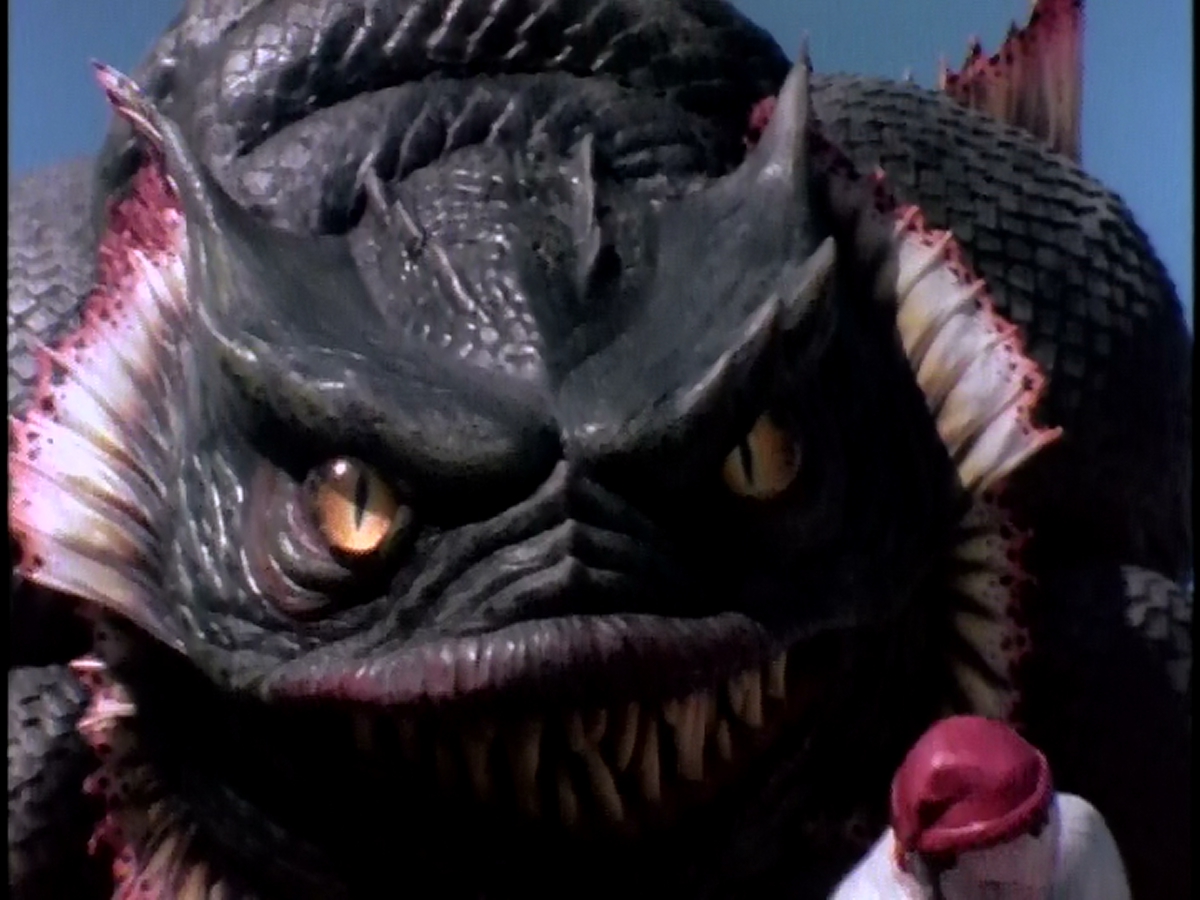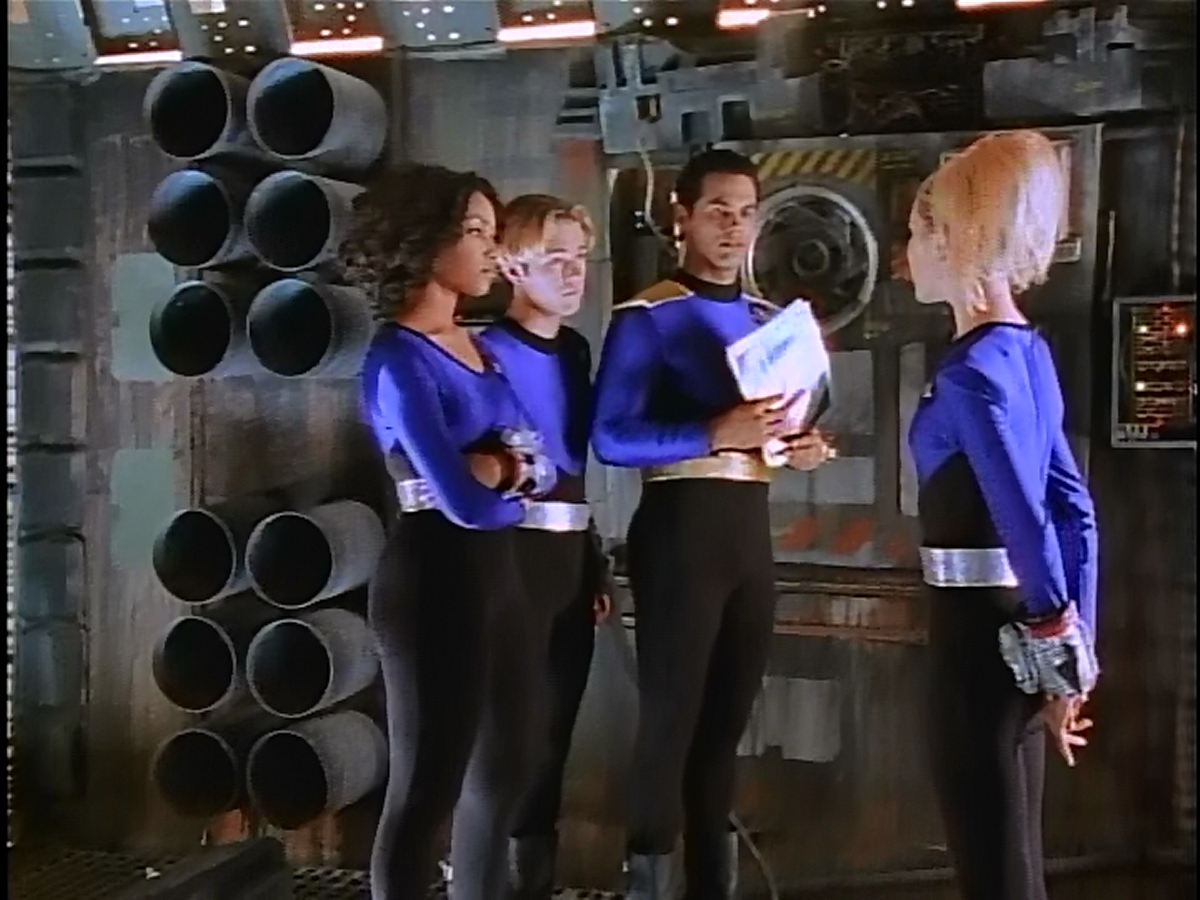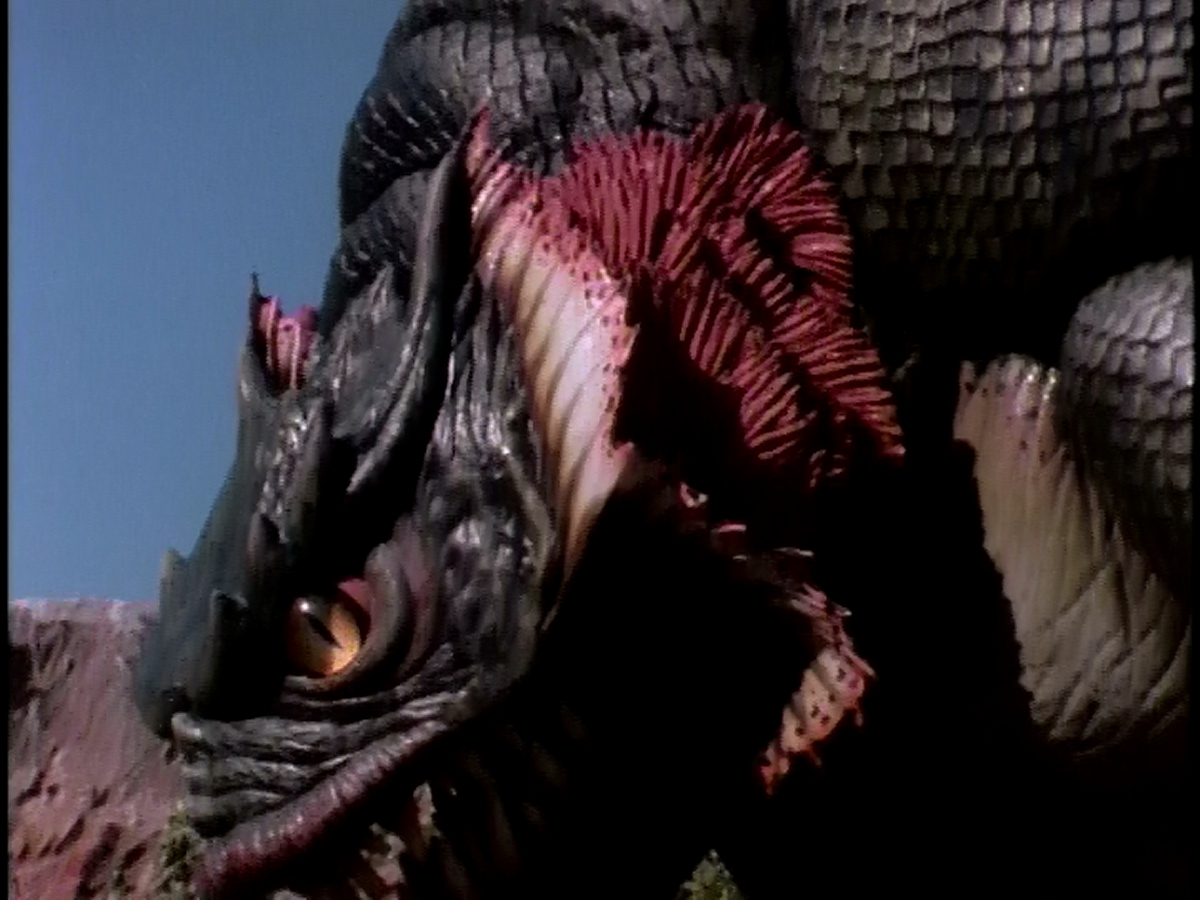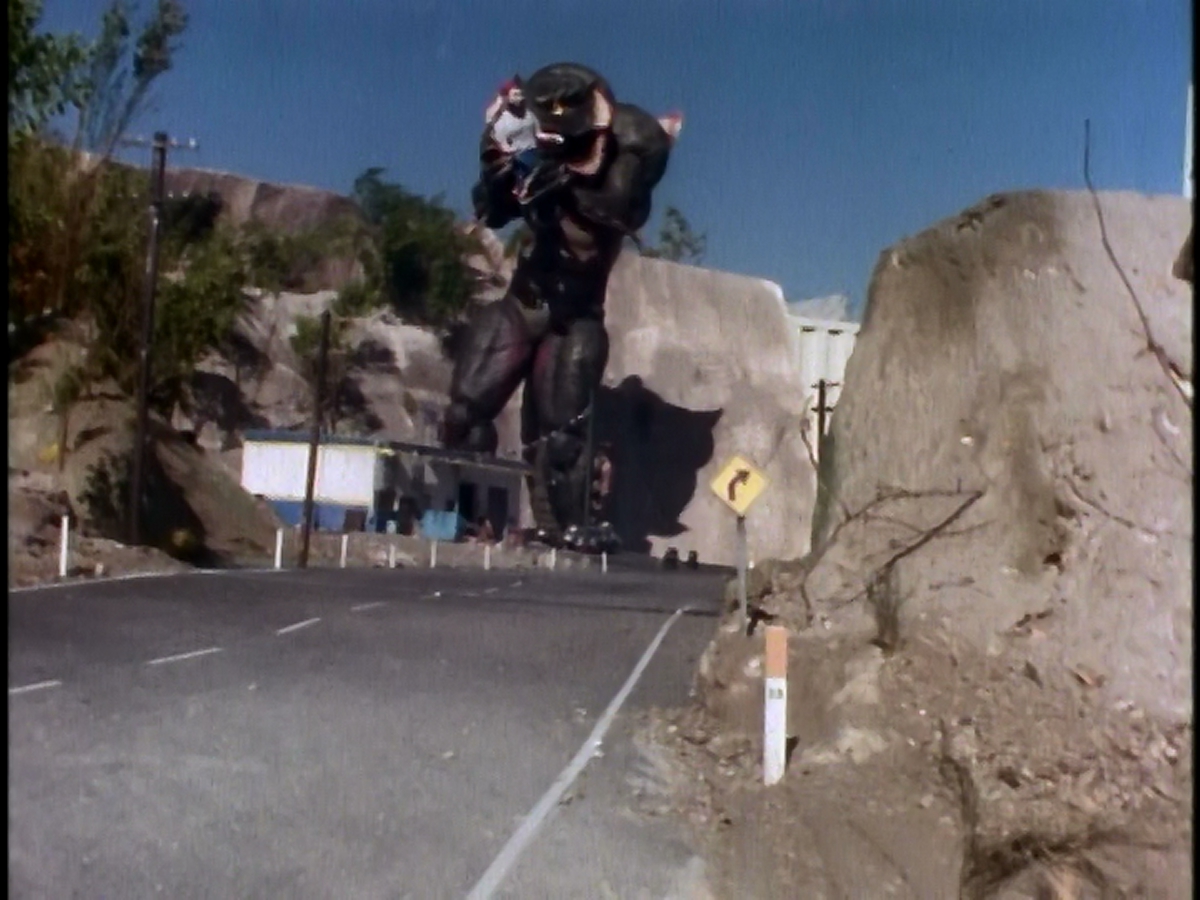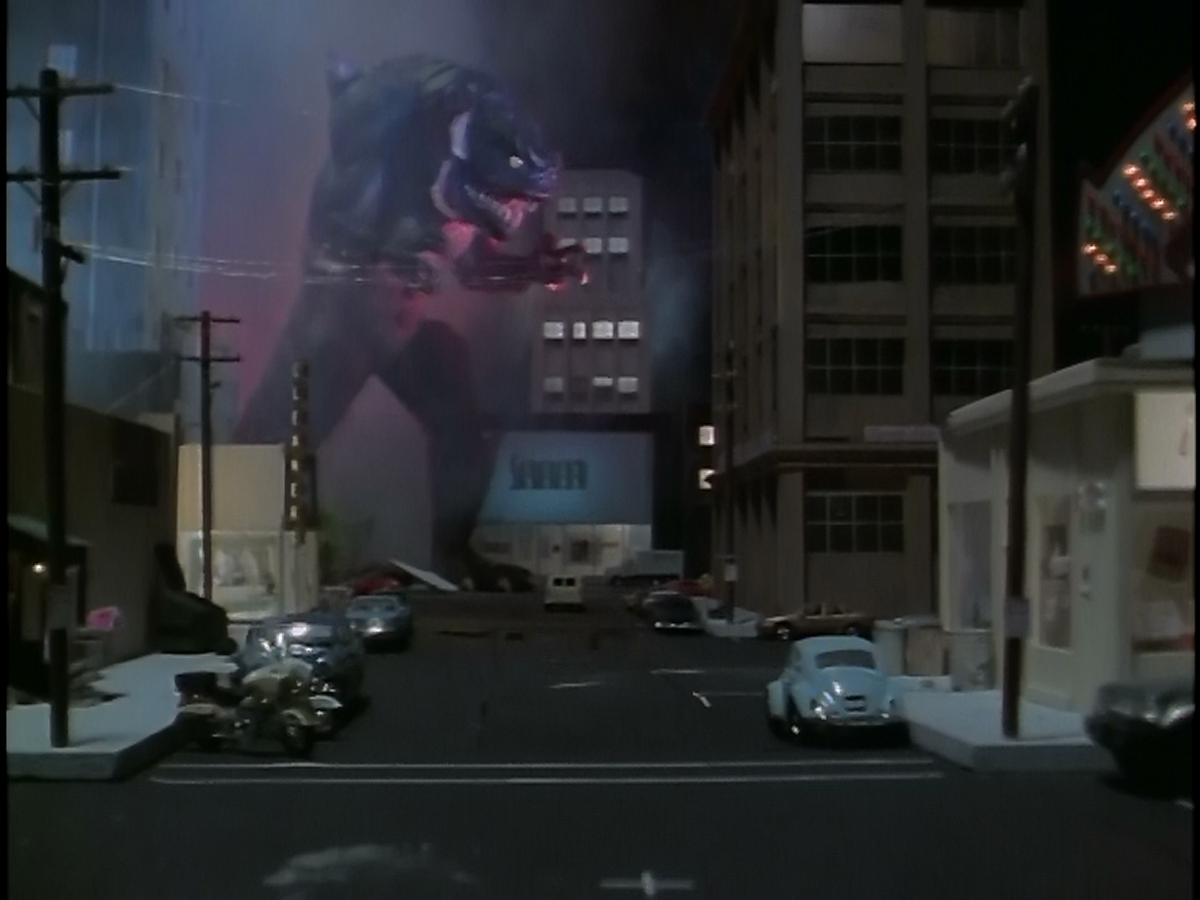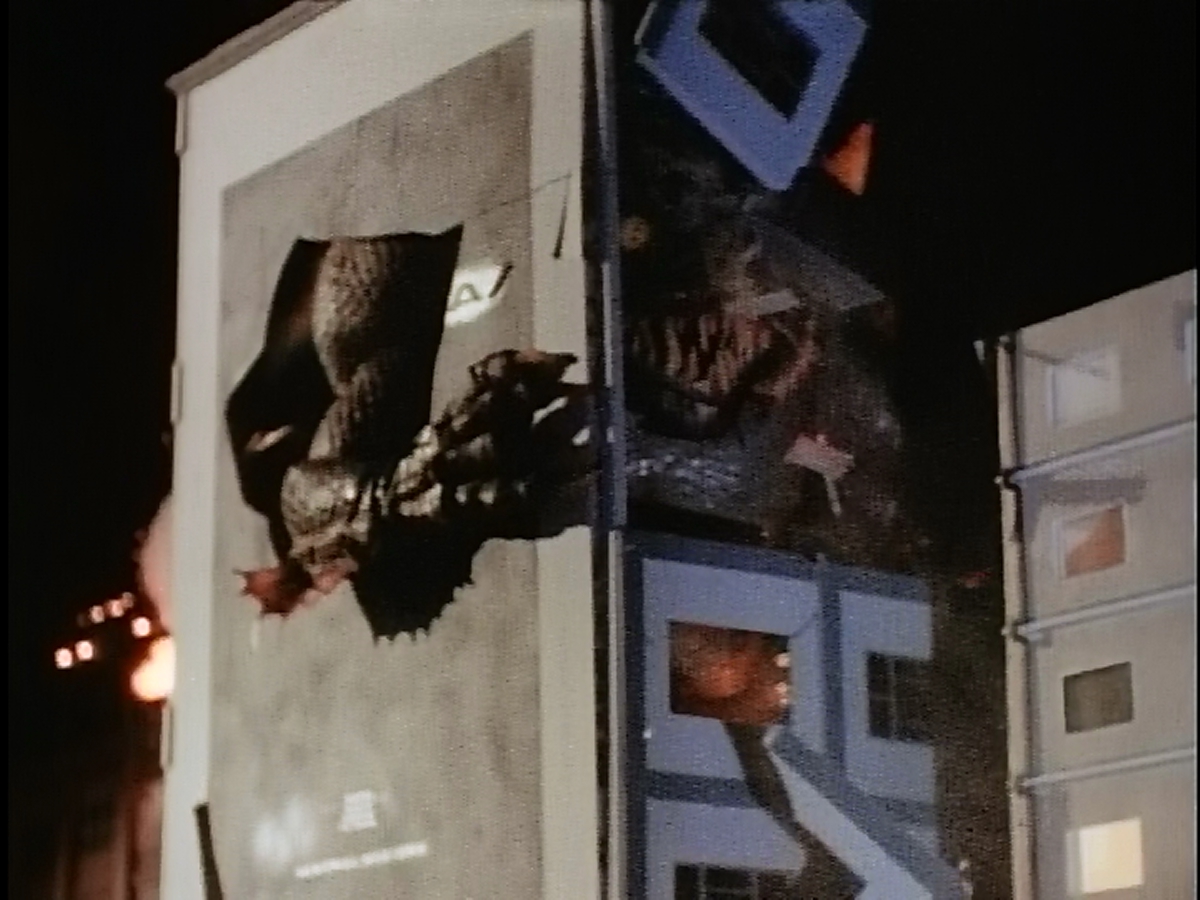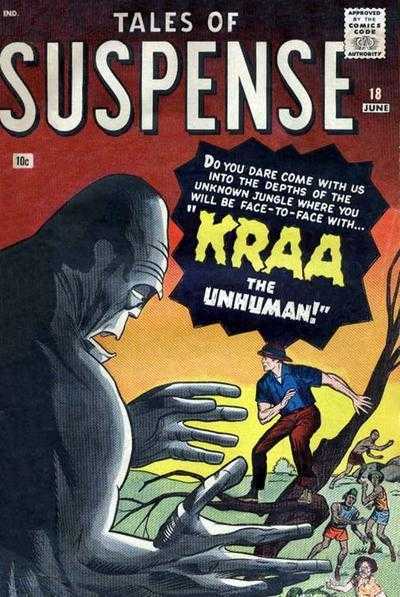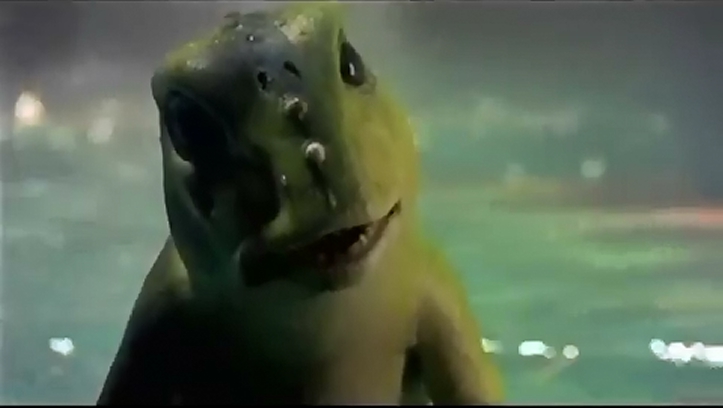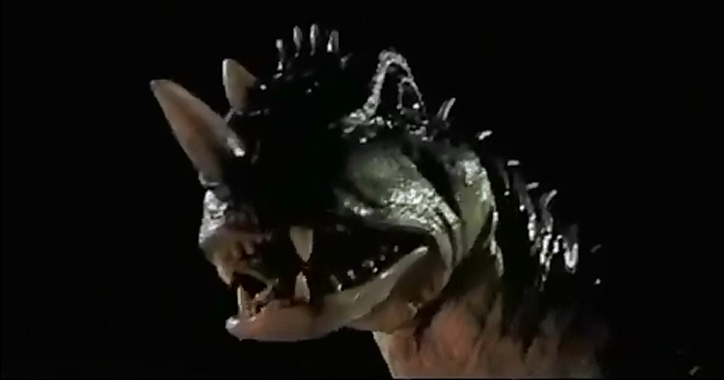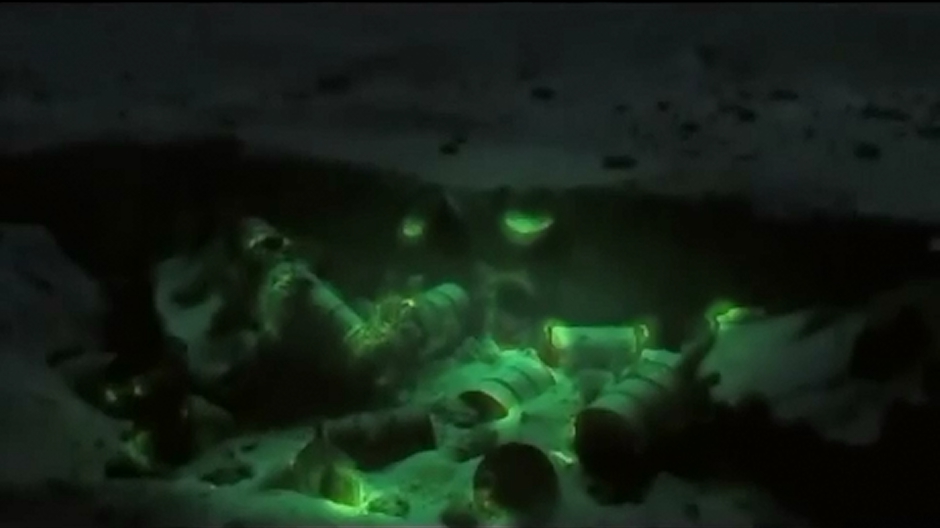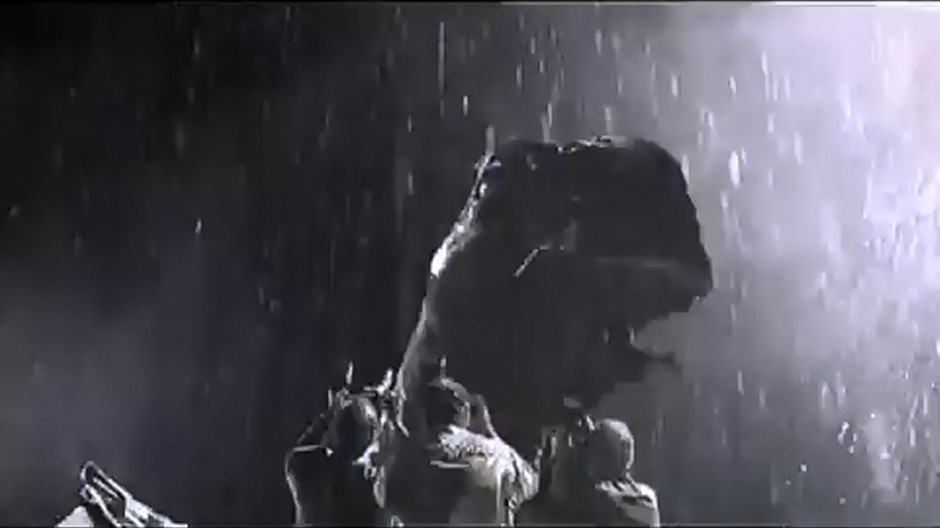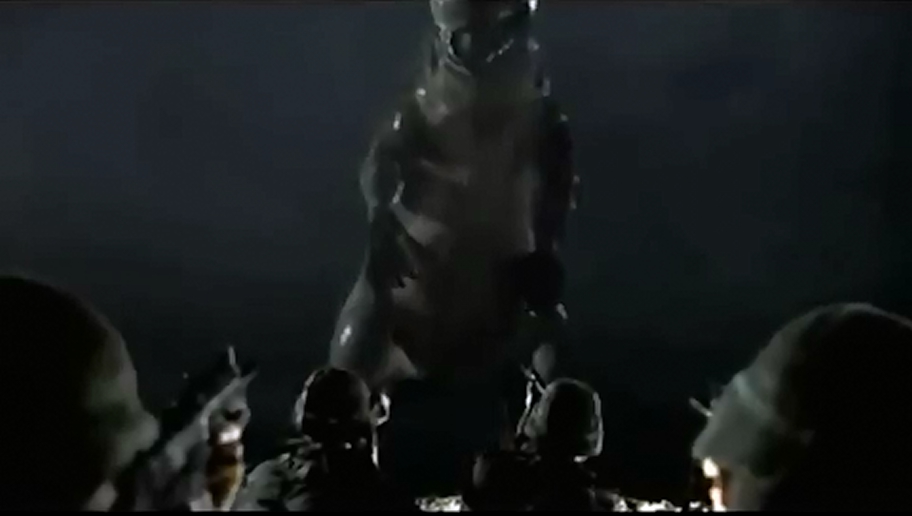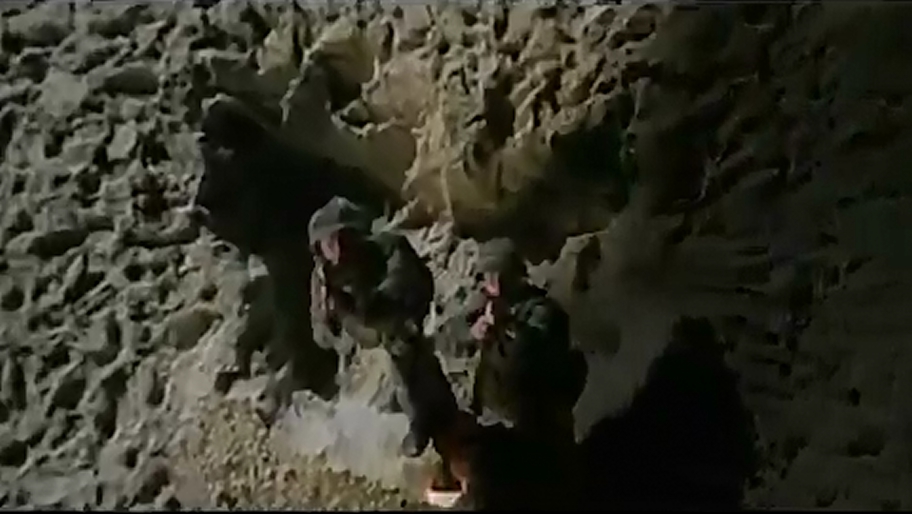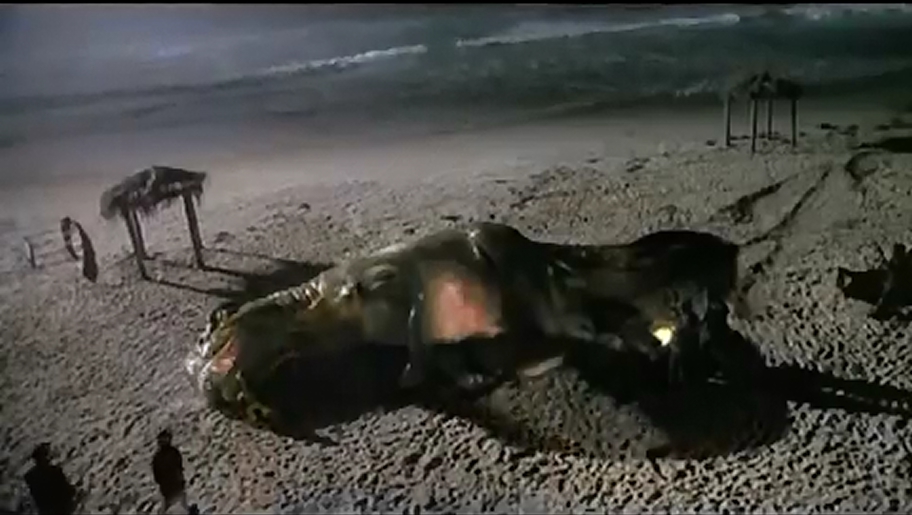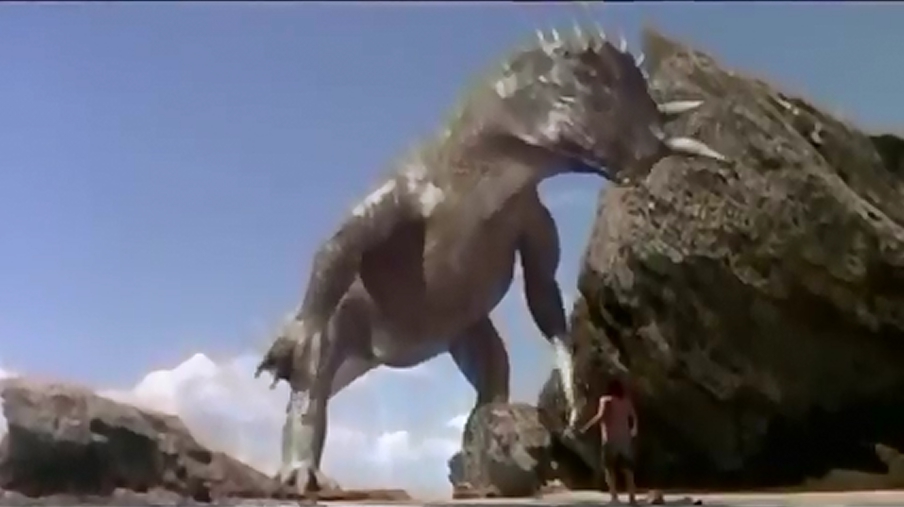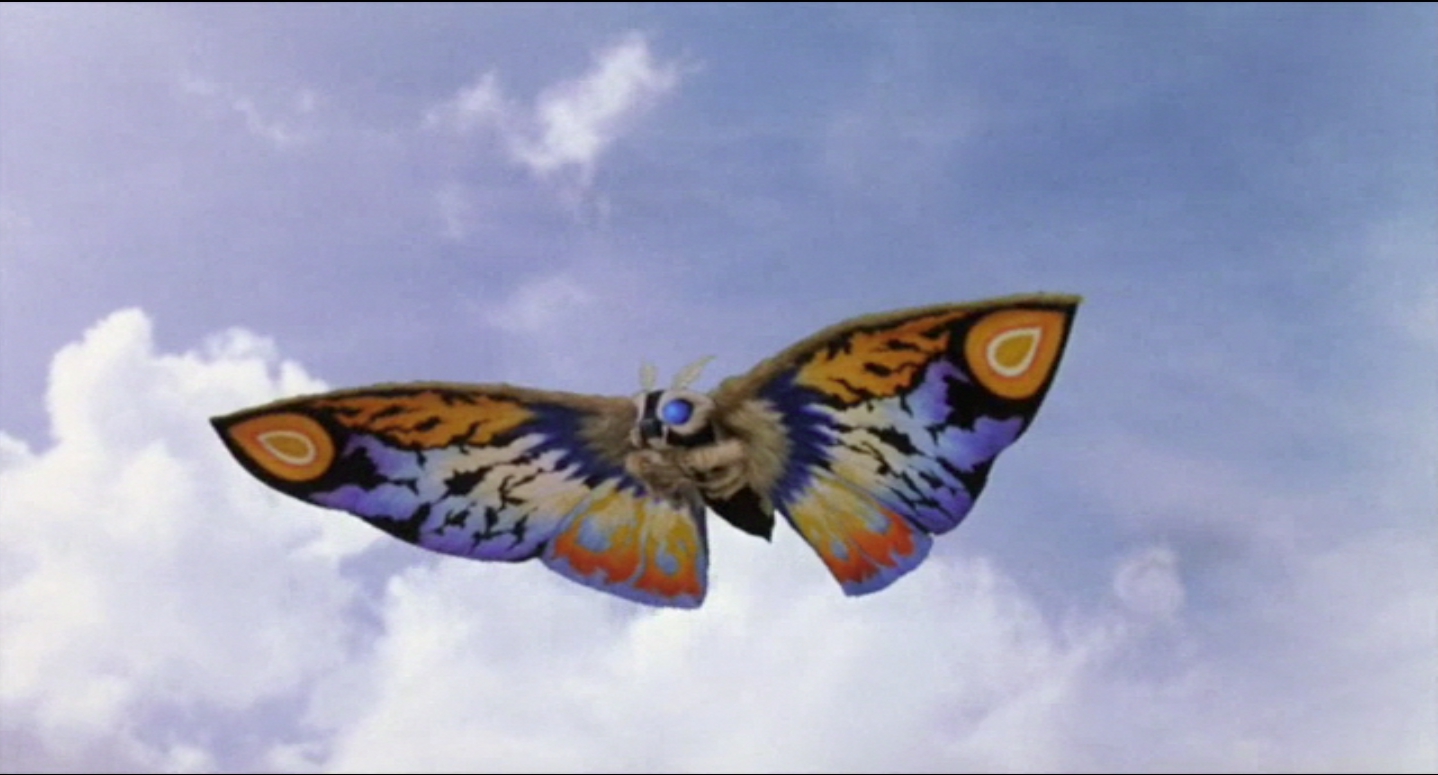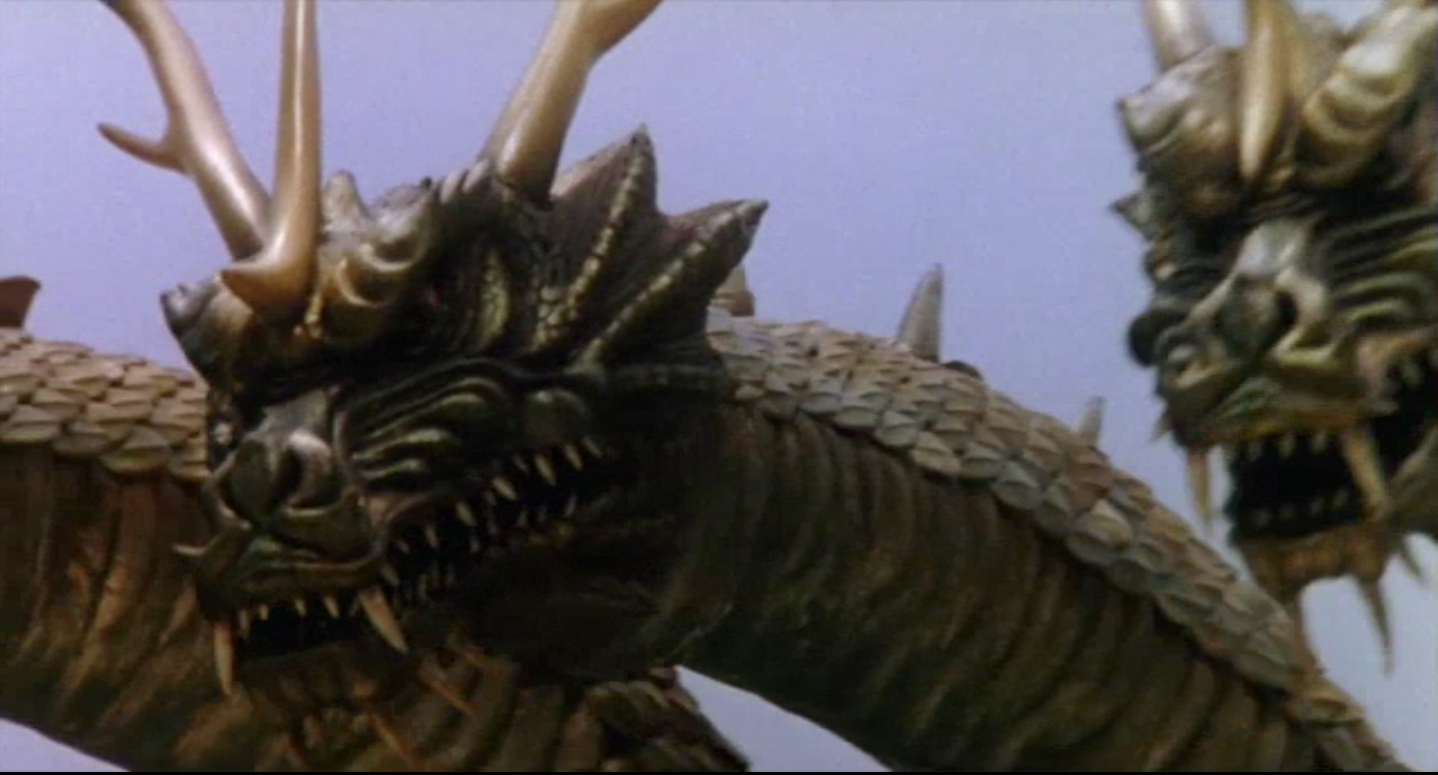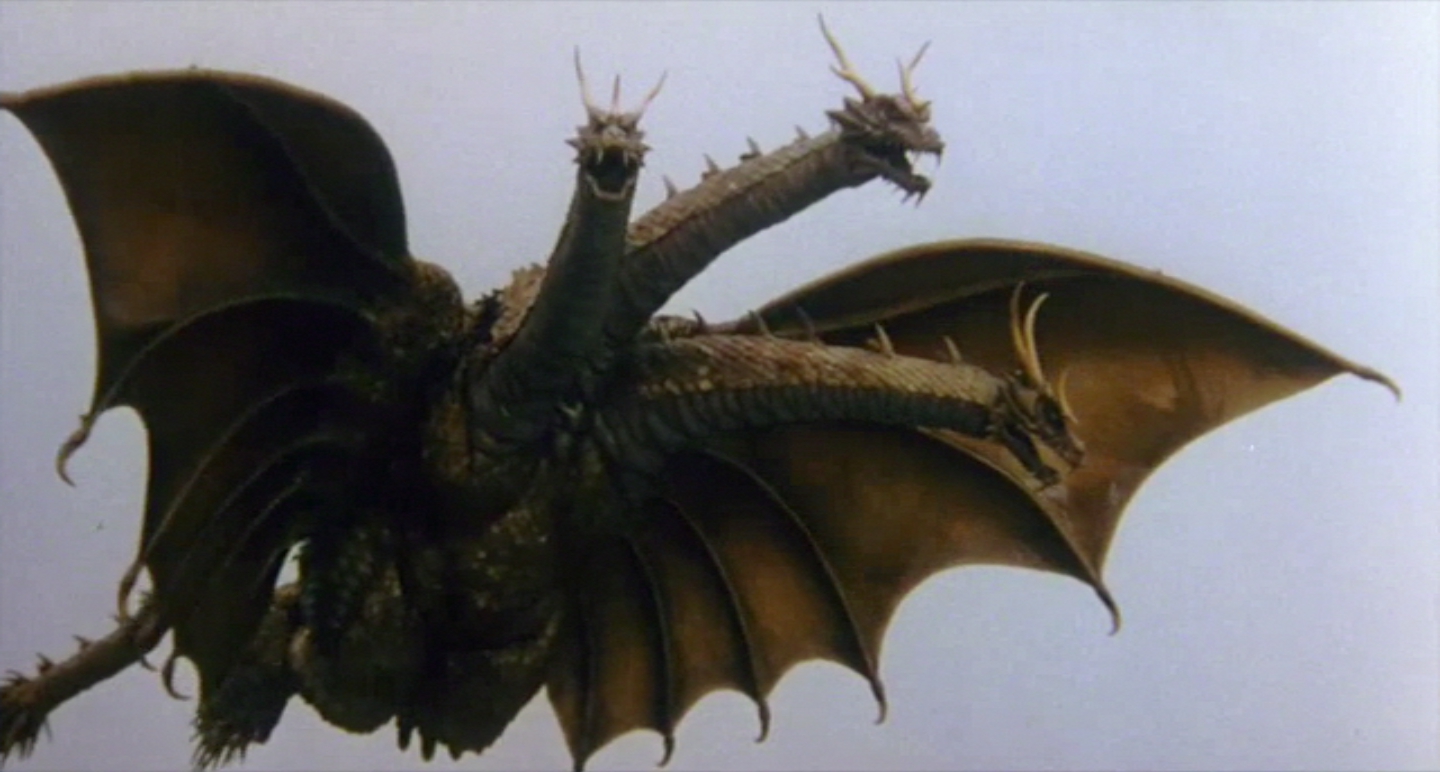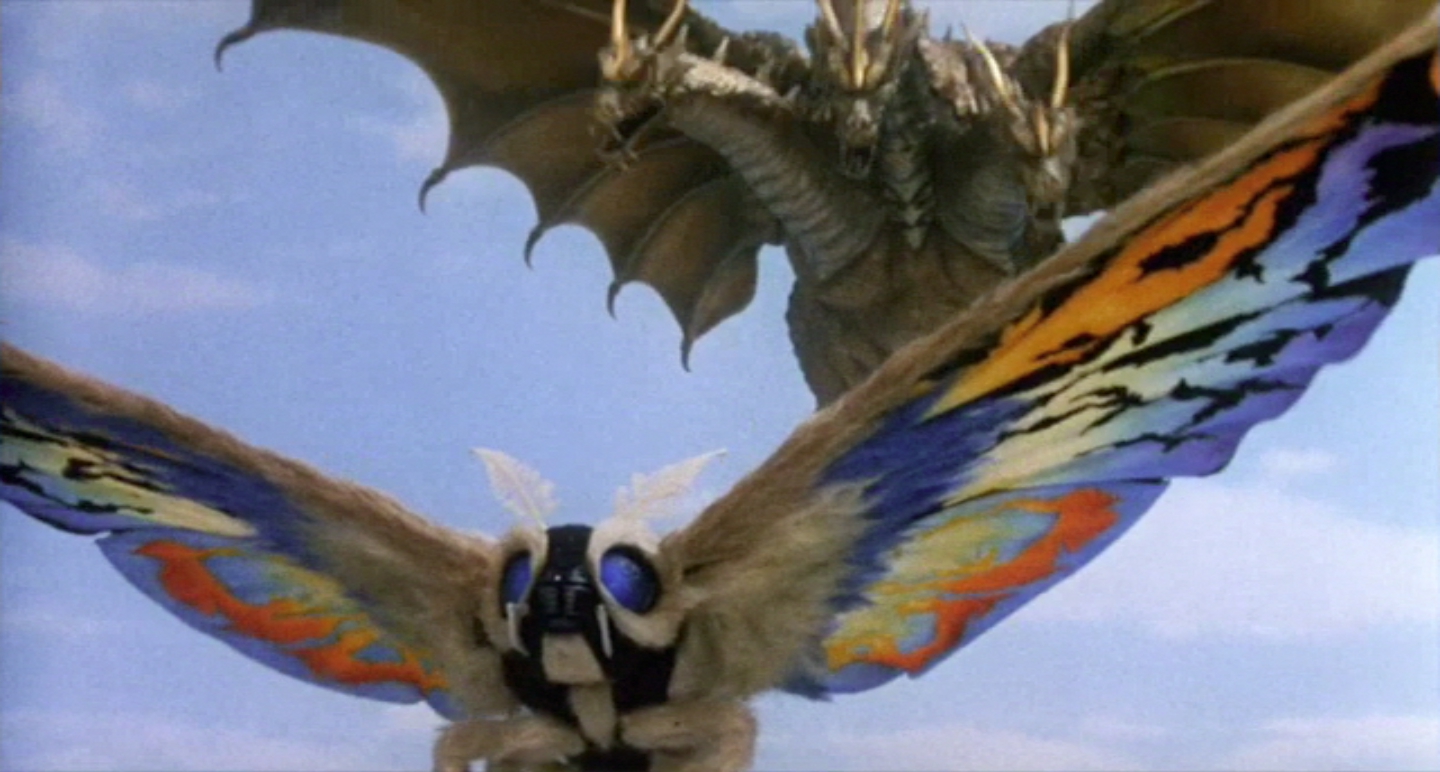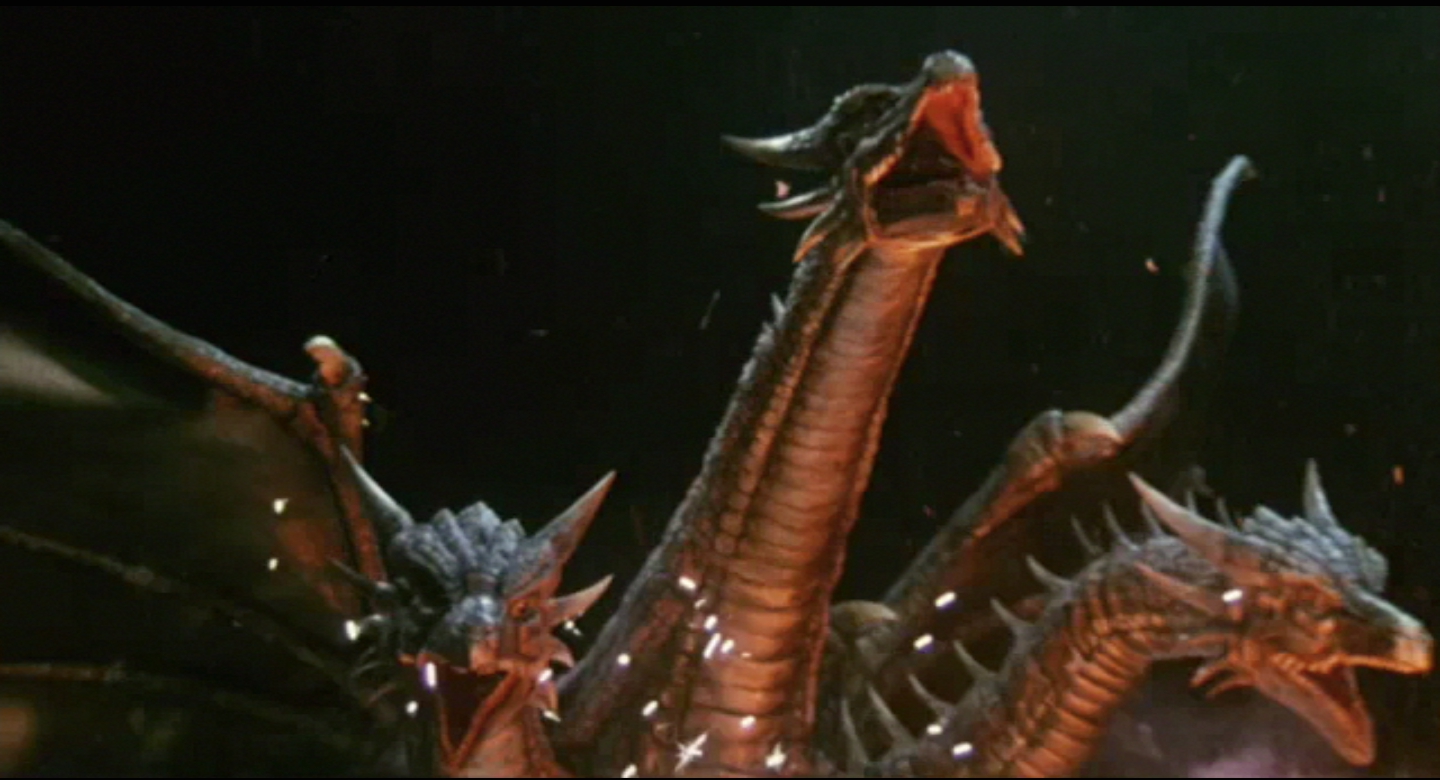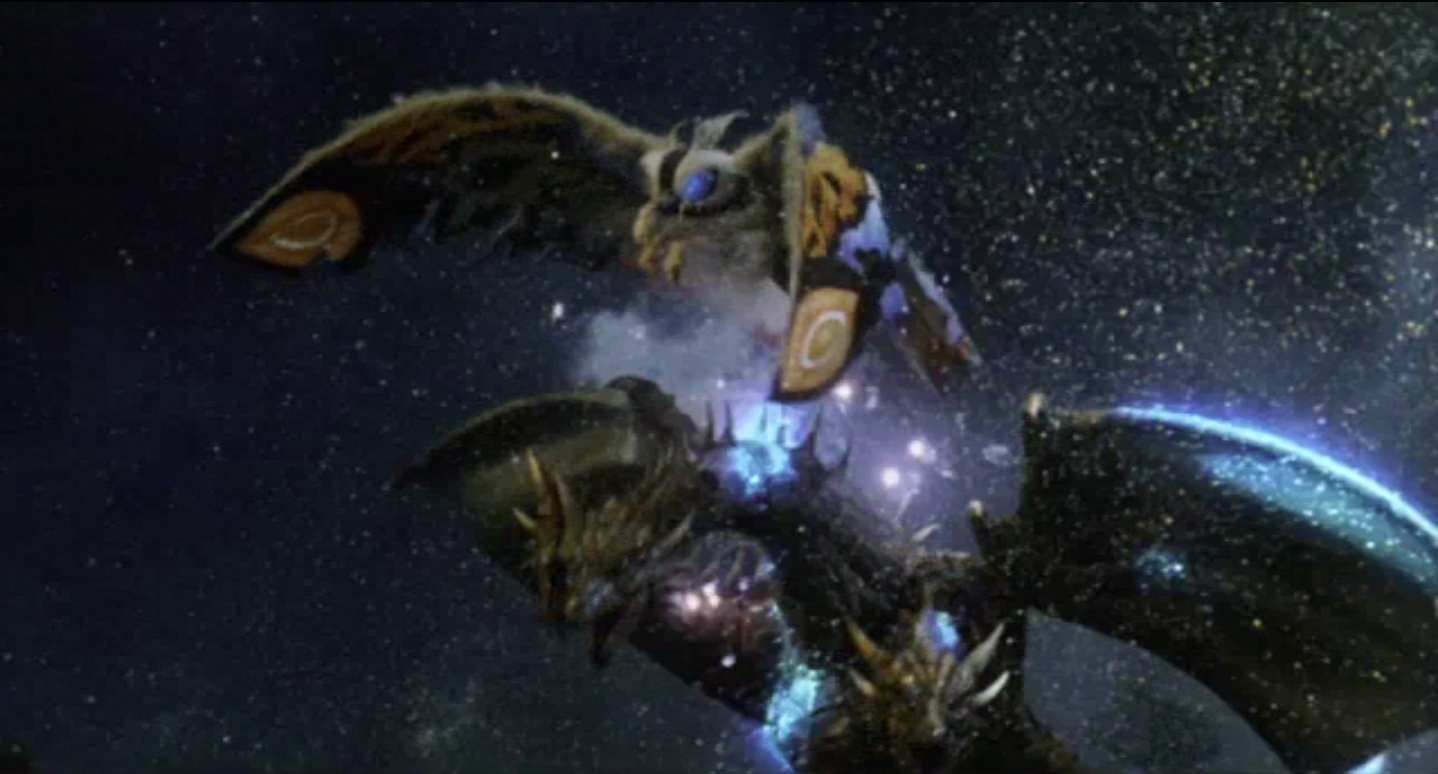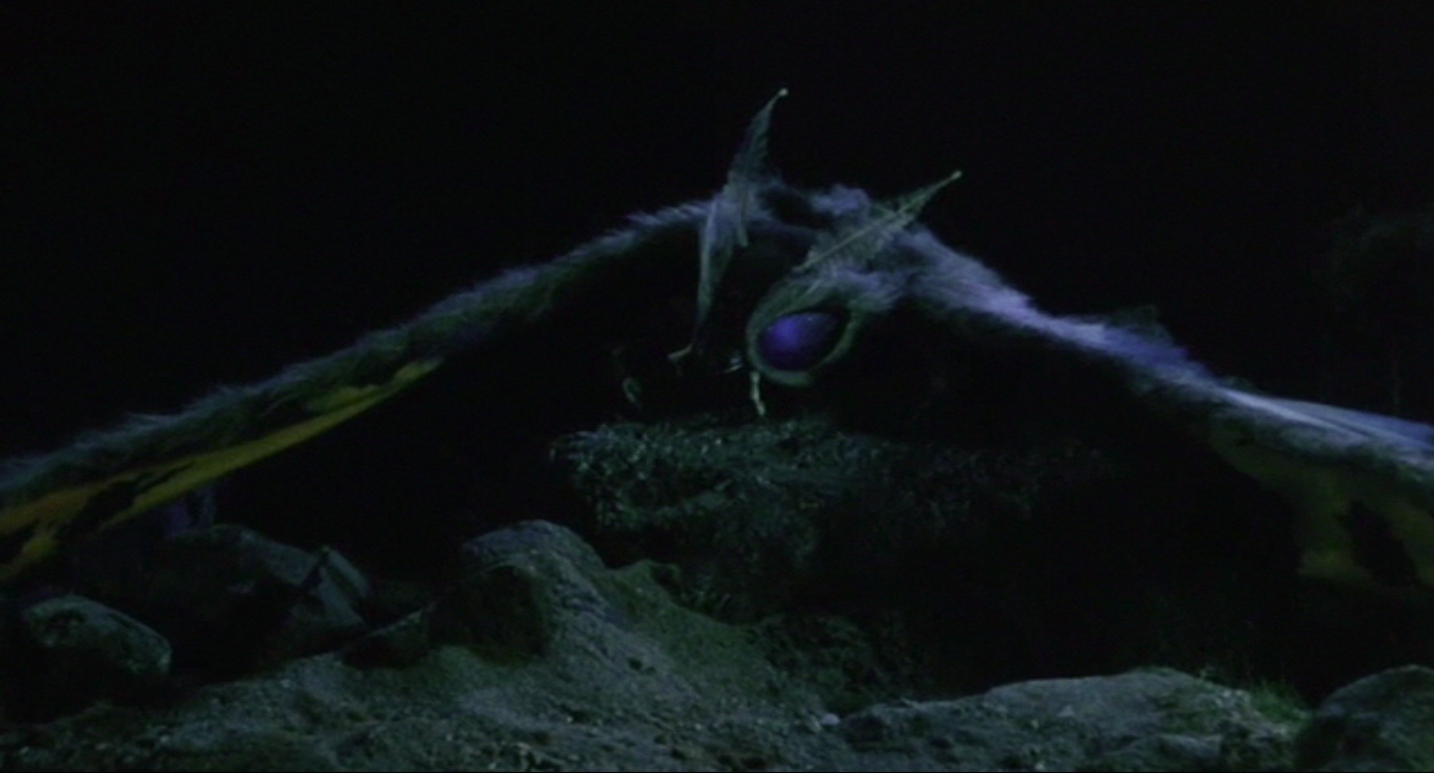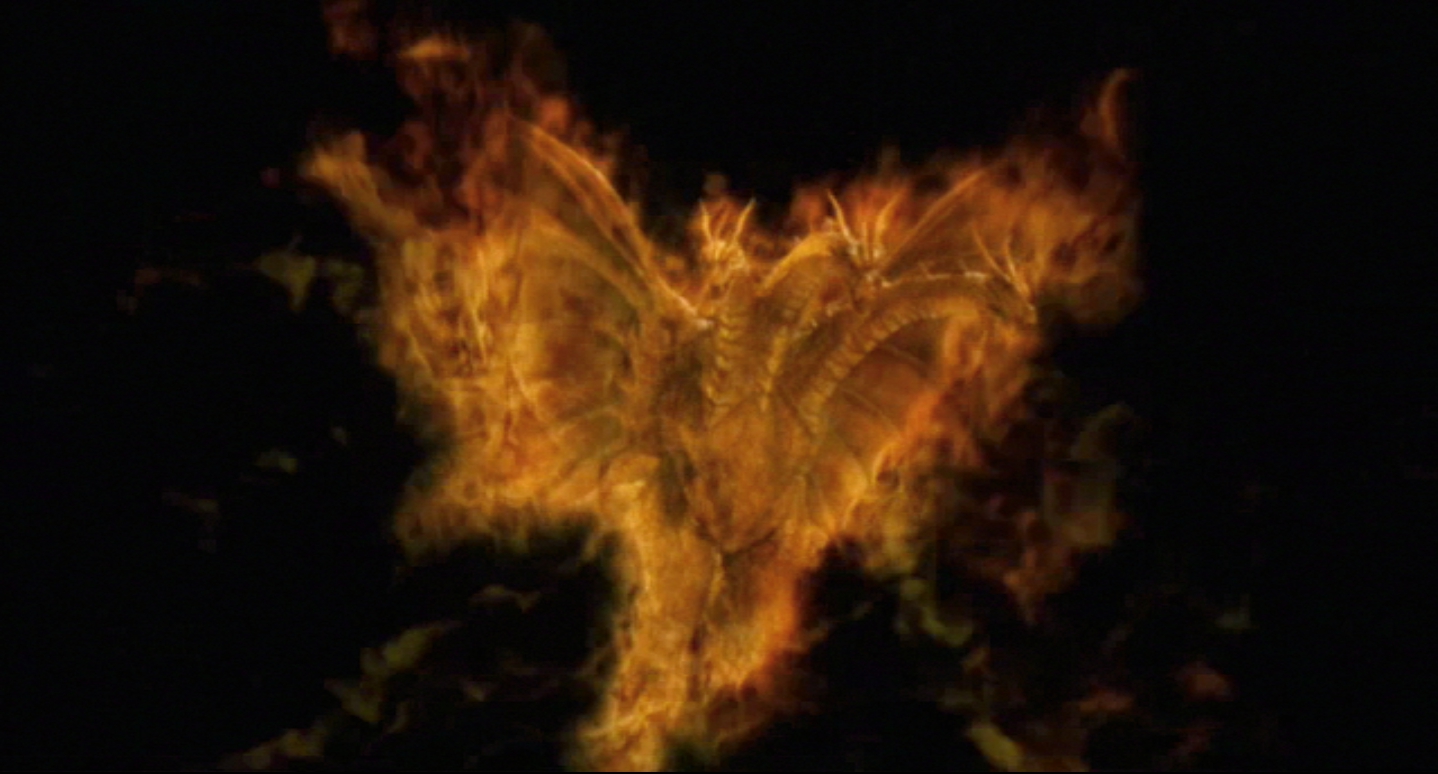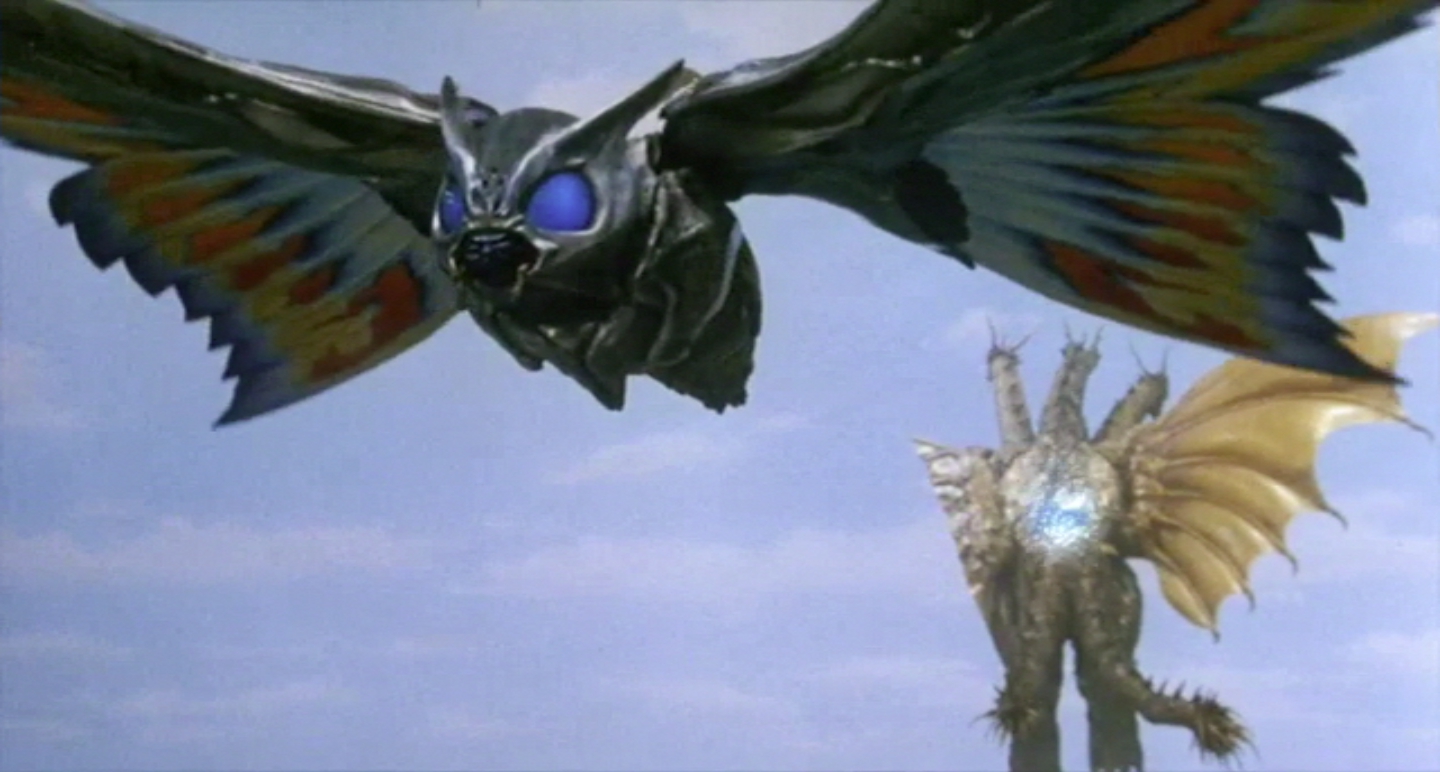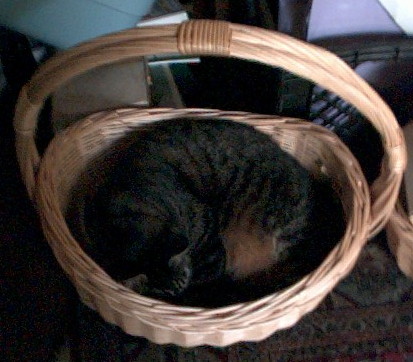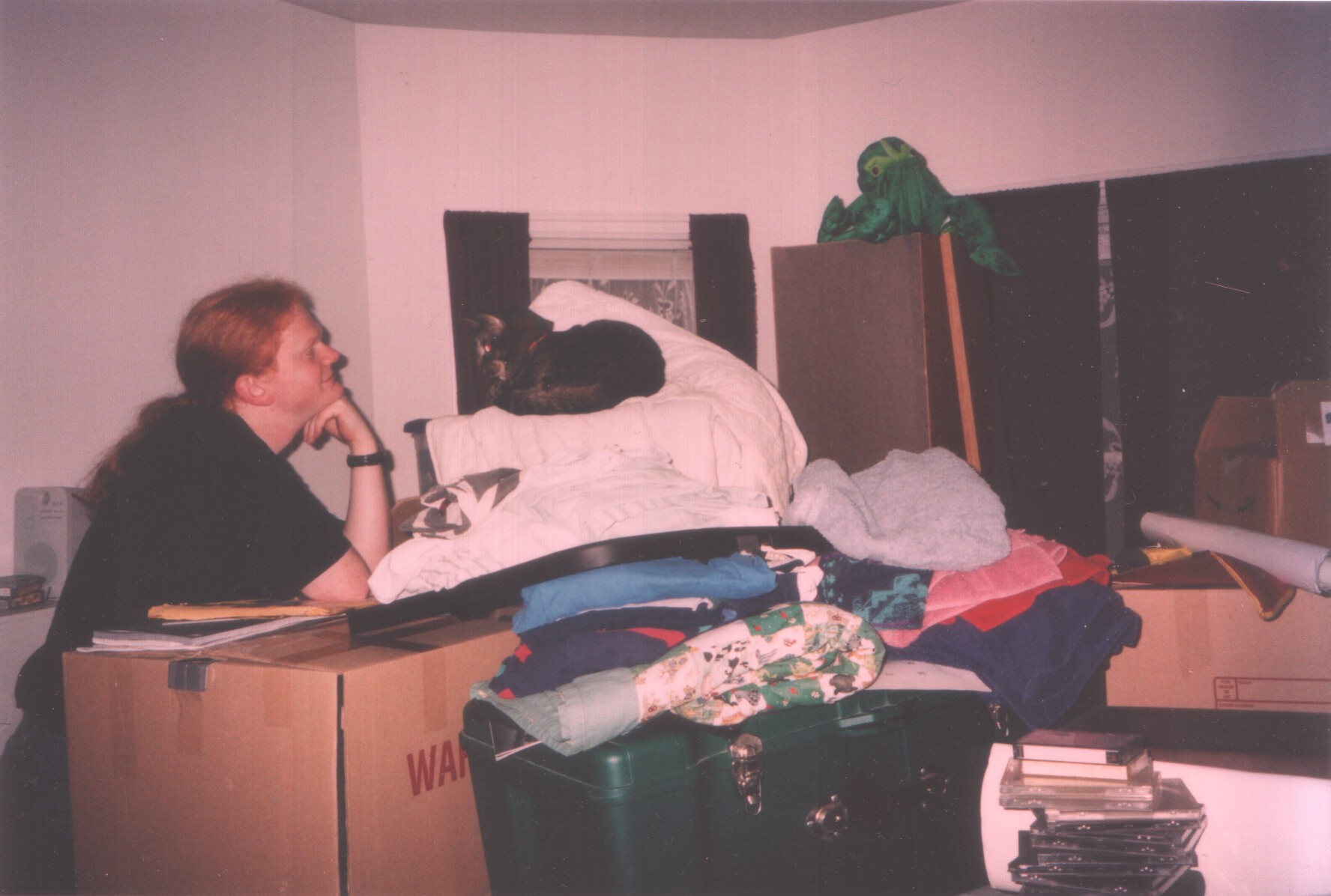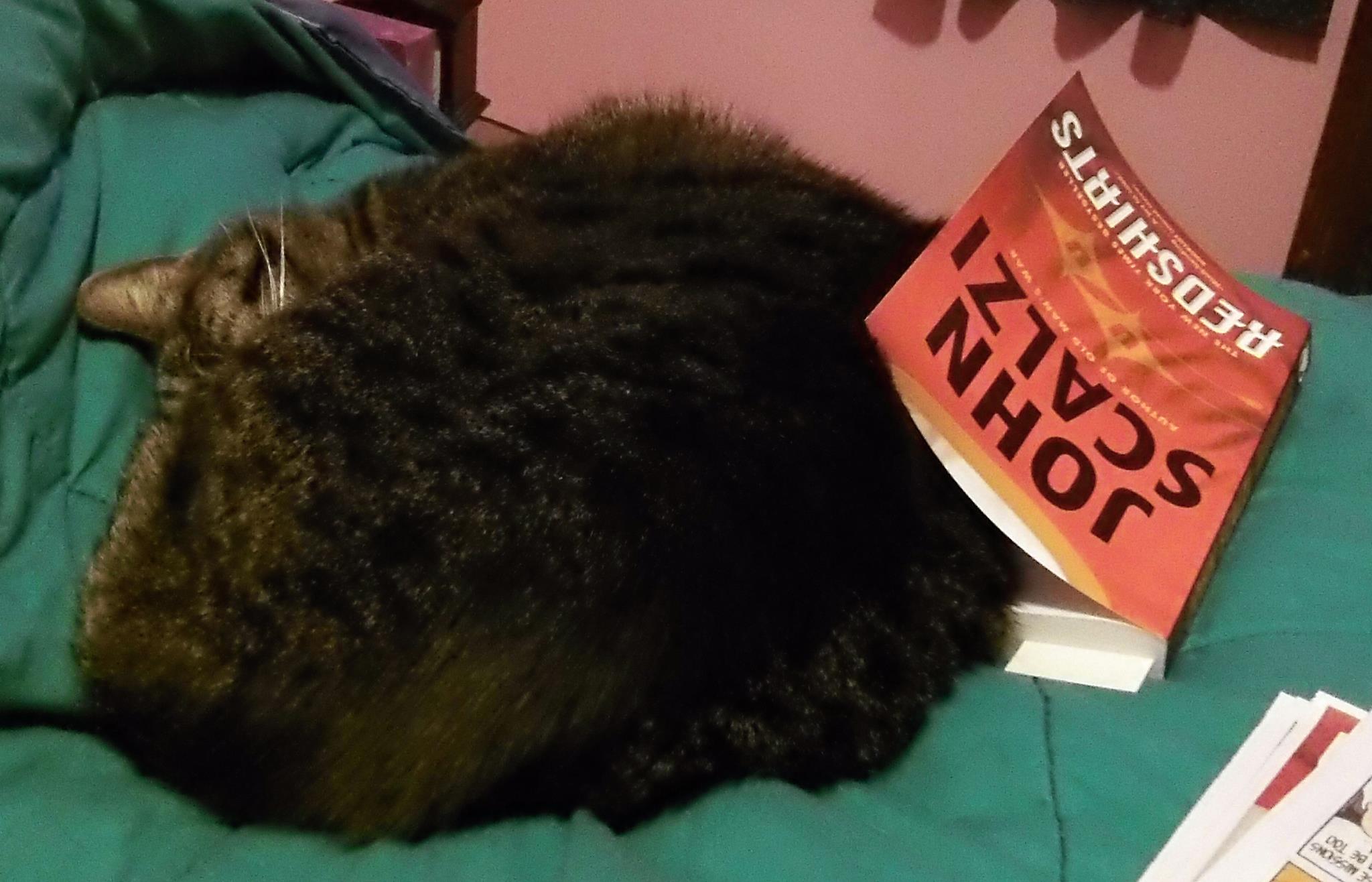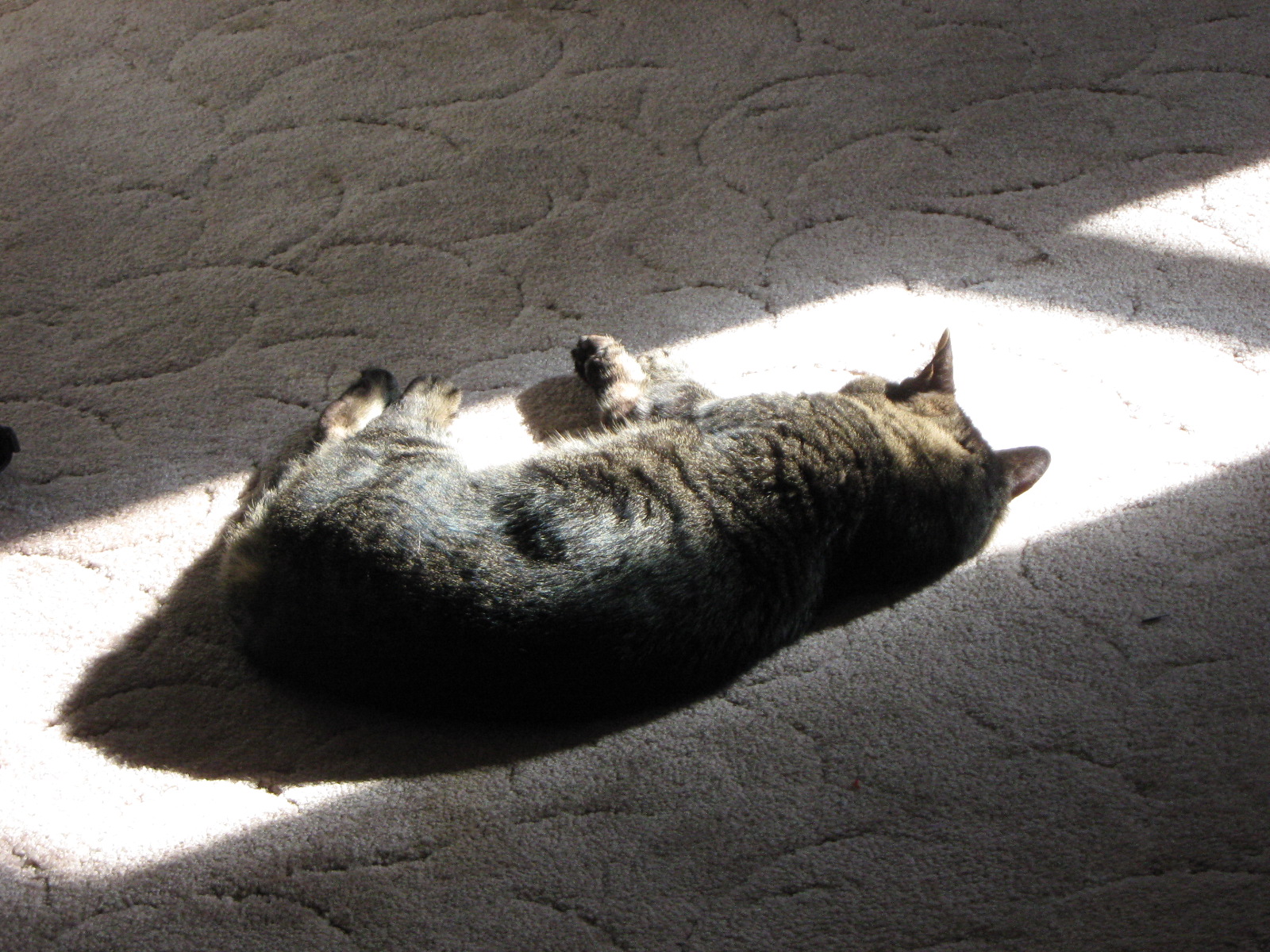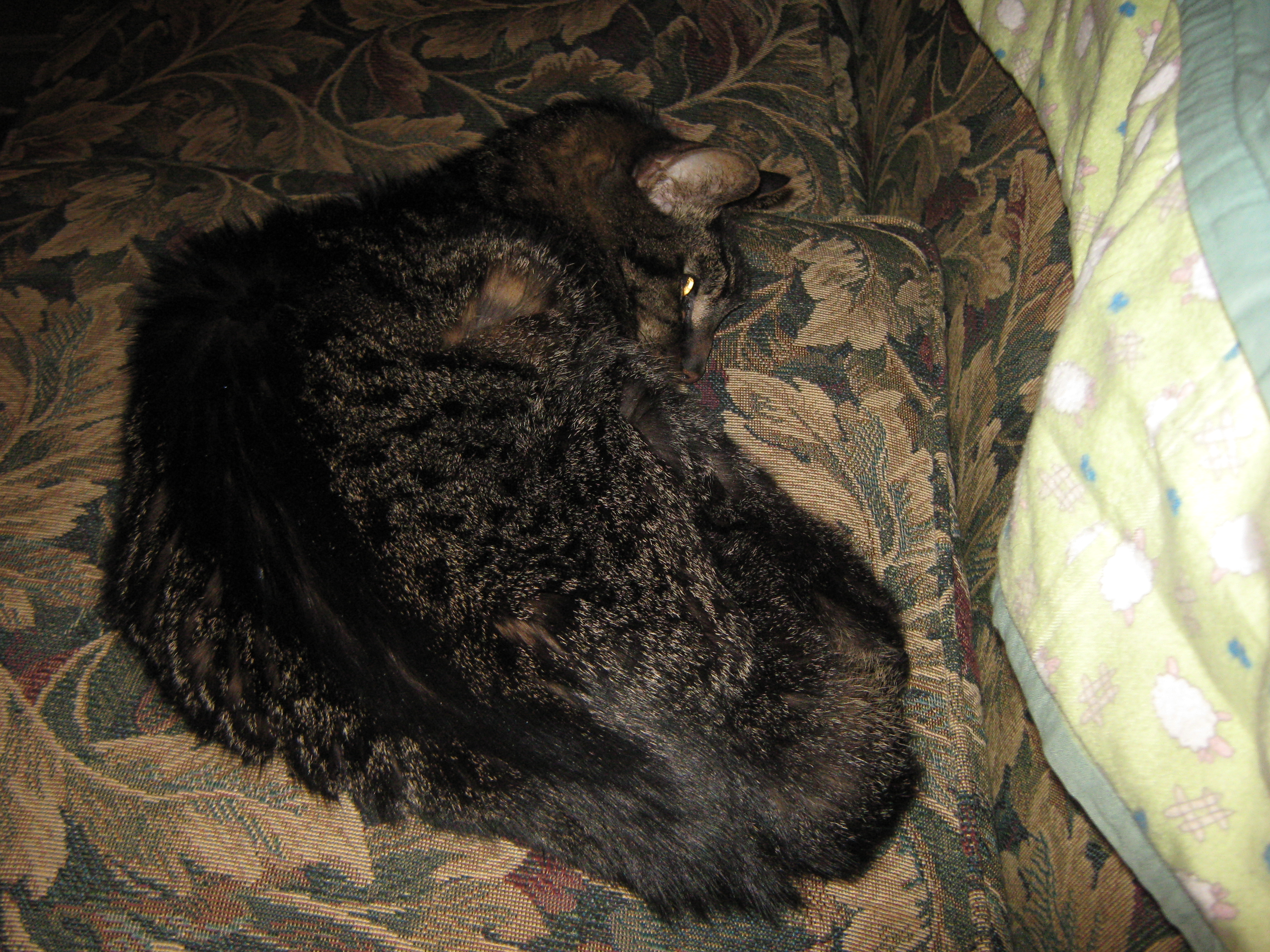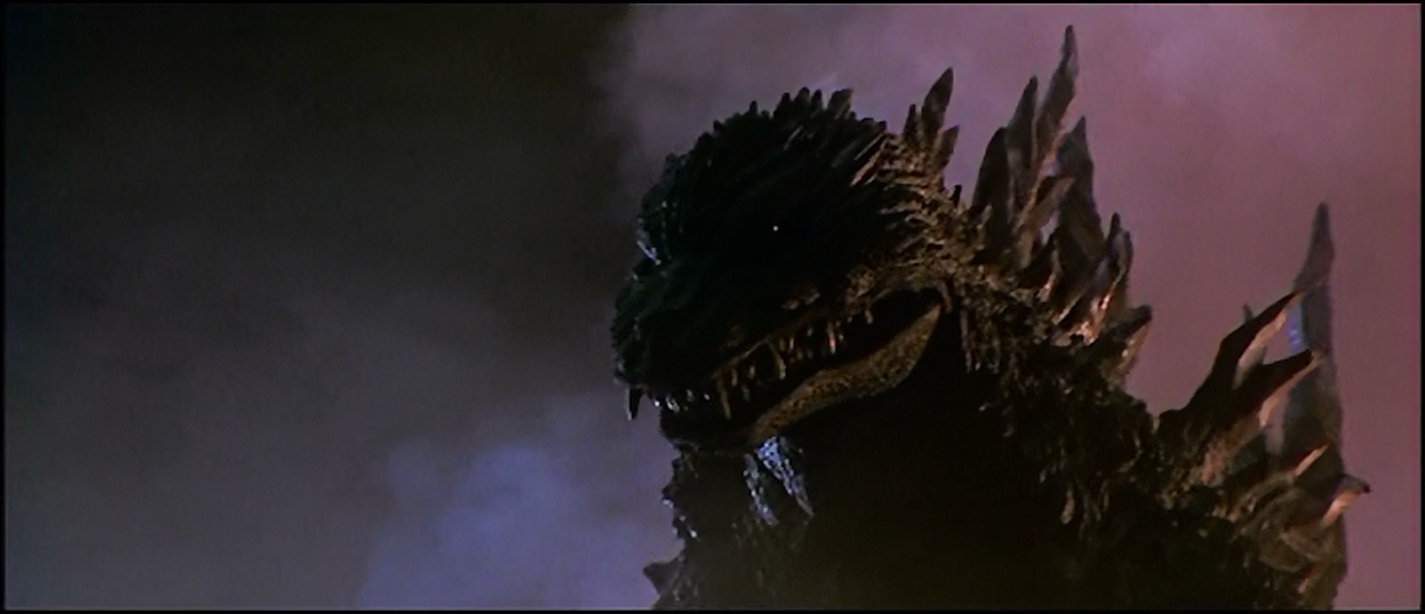
Toho hadn't been off monster movies since Godzilla died in the 1995 Godzilla vs Destroyah. The three Rebirth of Mothra films all featured giant monsters, King Ghidorah two out of three, so the studio was still in practice. The new Godzilla has a very new look. The spines are now enormous, the face is sharper, giving the suit a more streamlined, predatorial look. It is less humanly muscular that the Heisei Godzilla suits, more lizard-like. And it is dark green, a color that Godzilla has been in popular opinion, but never before in presentation.
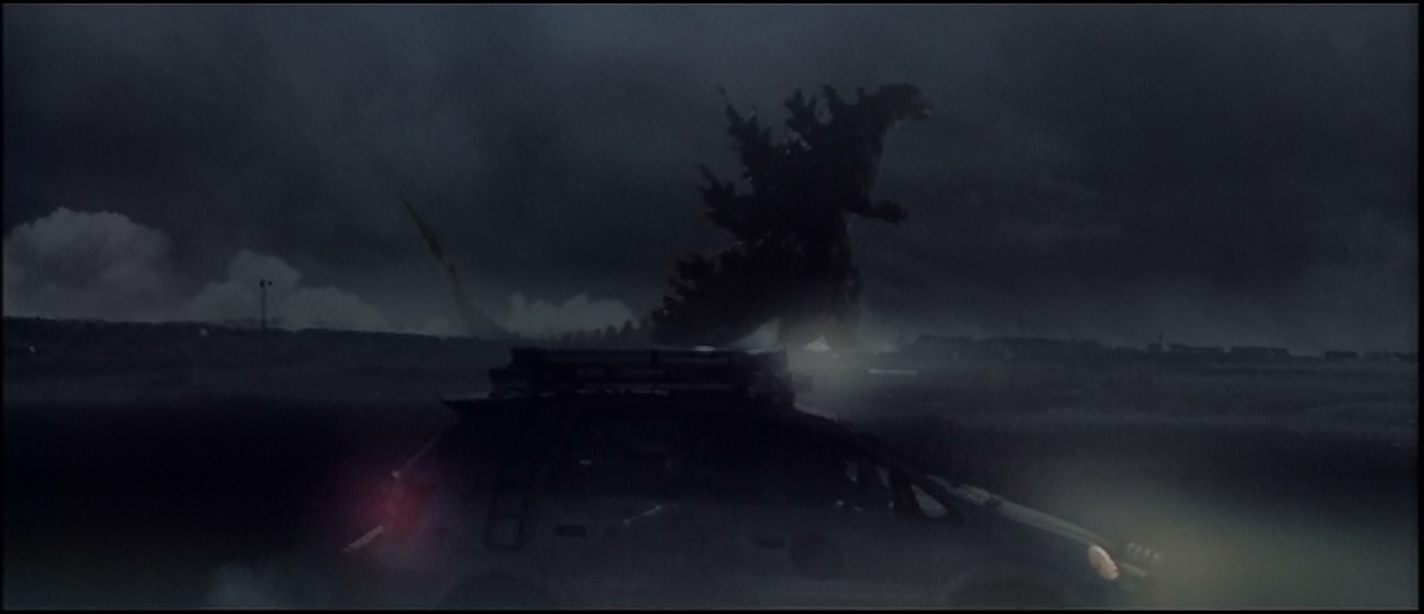
Godzilla 2000 is quite aware of the roots of the franchise. An early encounter with Godzilla takes place in a lighthouse, in an homage to the Beast from 20,000 Fathoms. Shinoda stands in the gigantic footpring of Godzilla, as in both 1954 and 1998 versions. Now, I've argued that Godzilla 98 is an extended, jokey remake of Beast, but here the homage is light. Godzilla 2000 wants to be its own film. At the same time, the extensive use of MacIntosh conmputers being hacked by the alien could be a sly reference to the MacIntoshes used to hack the aliens in Roland/Emmerlich's Independence Day. The new anti-Godzilla weapon developed in this film is a form of all-penetrating missile. These of course do nothing, and it's difficult not to see this plot point as a repudiation of Godzilla 98's death by missiles.
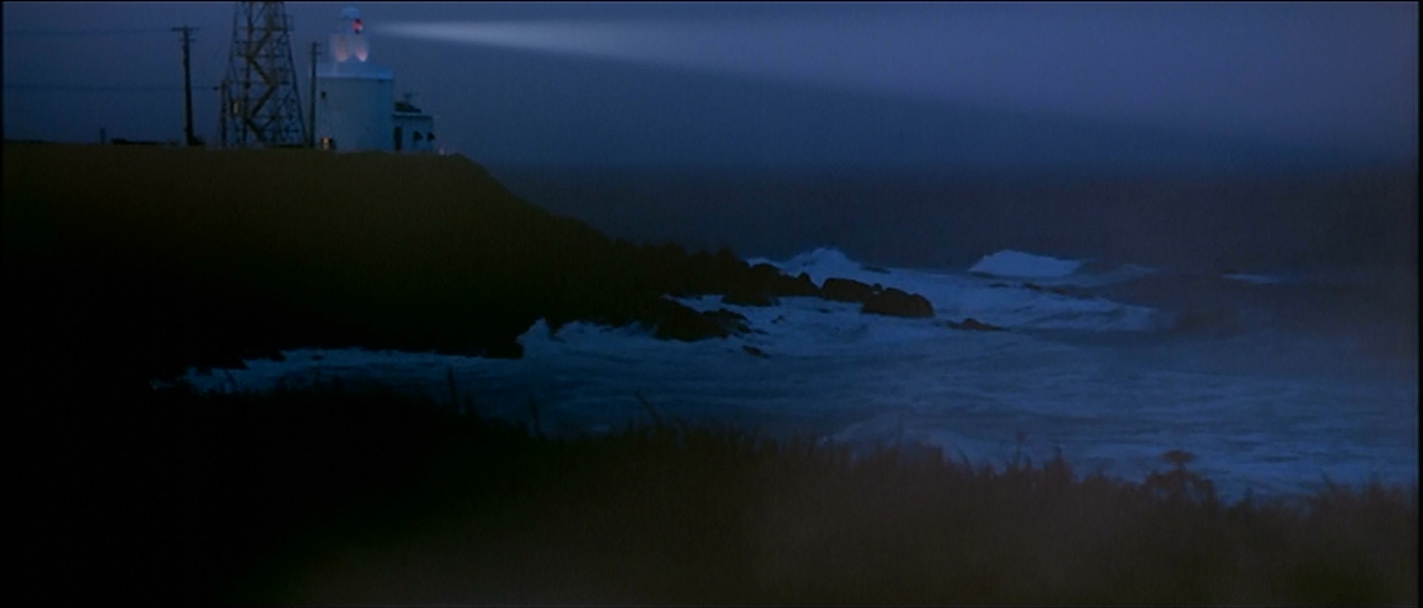
Godzilla 2000 sets itself up in a way that Godzilla is not really the hero, nor is he the villain. He wrecks cities and fights the military, but when Ogra shows up, well they've got to be put to the torch, too. Human or alien, Godzilla is going to fight whatever is in his way.
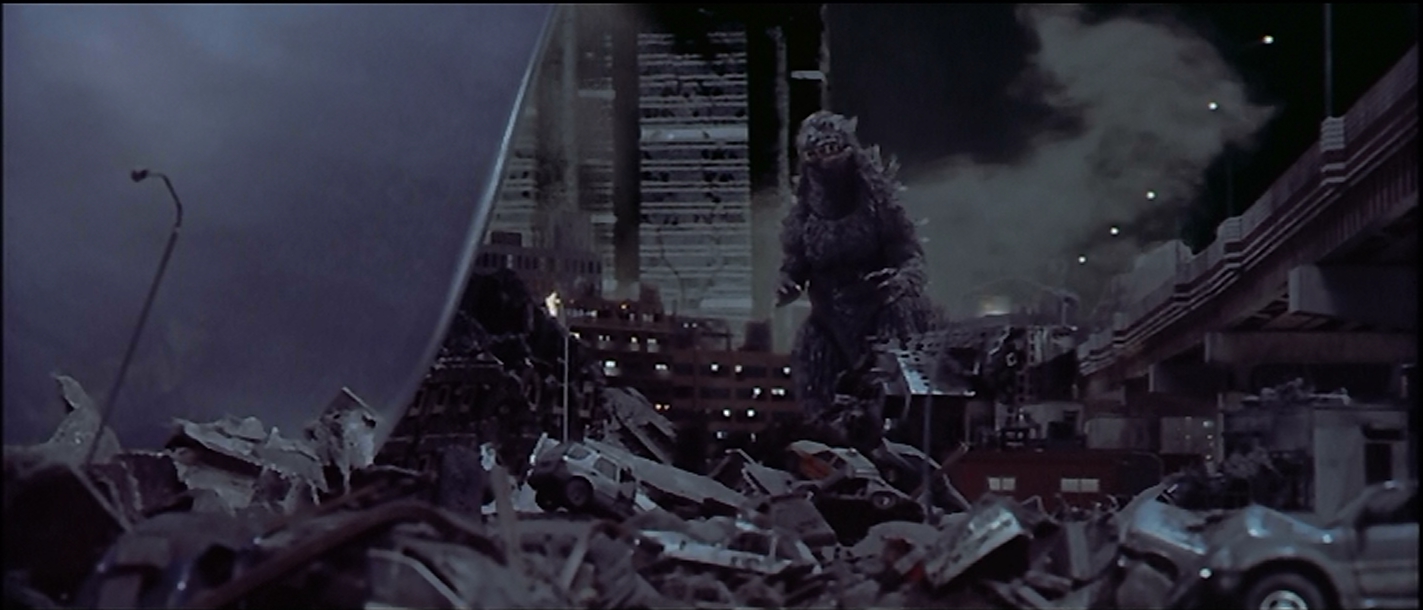
Human characters Shinoda and Katagiri are the two sides of the same argument that was central to Godzilla 1954. Shinoda wants to study him, where Katagiri is attempting to eliminate him. This lets us know that Shinoda's heart is in the right place, where Katagiri's is not. The scientific study of Godzilla also give us the major plot, the analysis of Regenerator 1, the special factor that Godzilla has that allows him to quickly repair himself. This isn't mentioned in any other film, but the references to Godzilla's unique DNA and the collection of it is similar to the genetic eingineering from Godzilla vs Biollante. In fact, there's a fair amount that tiesd this film in with Biollante. Godzilla is attacked by cables turned tentacles. Both Biollante and Ogra attempt to consume Godzilla, and that doesn't turn out well for either.
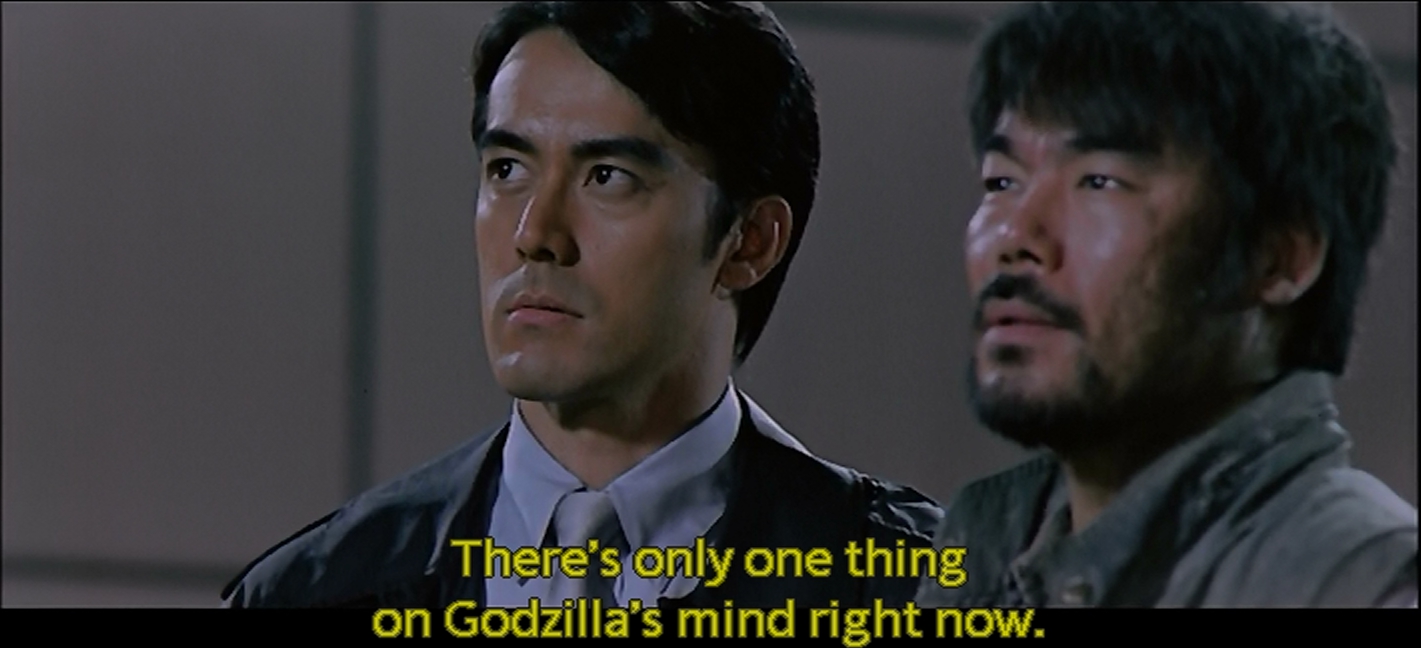
The film has its problems. The plot is not sterling, the characters perfunctory, the logic occasionally strained. But the last third of the film, the confrontation between Godzilla and Ogra, is one of my favorite Godzilla set pieces. It starts with Godzilla's apprach, over which Ifukube's classic Godzilla march is played. What better way to let the audience know that the film knows its own roots?
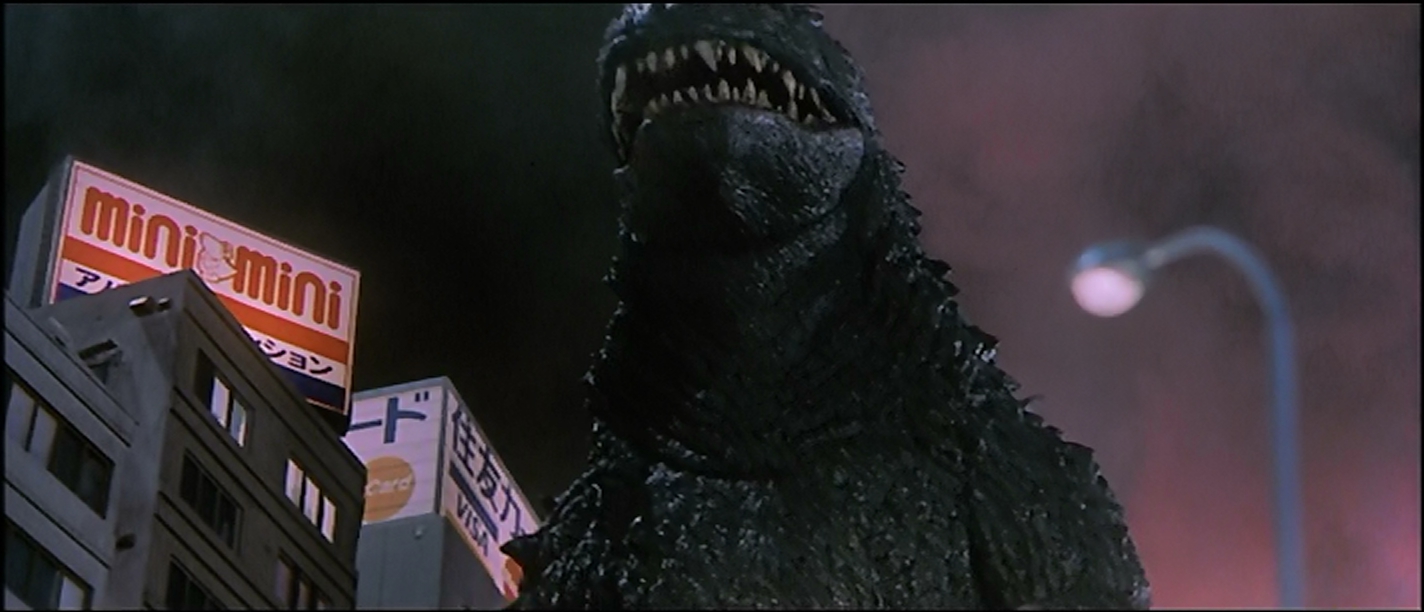
Godzilla's opponent is a new creature, Ogra, or the Millennian, is formed from a space ship that is being pulled from the bottom of the ocean. It's been there for millions of years, and once it gets some soler energy, takes off, able to work for itself. According to data that mysteriously appears on a laptop, the aliens want to change the atmosphere to make the Earth more habitable for them, an idea later borrowed by Pacific Rim. The enemy, Ogra, starts outas a silvery creature, with tentacles and a body shaped like the original ship.
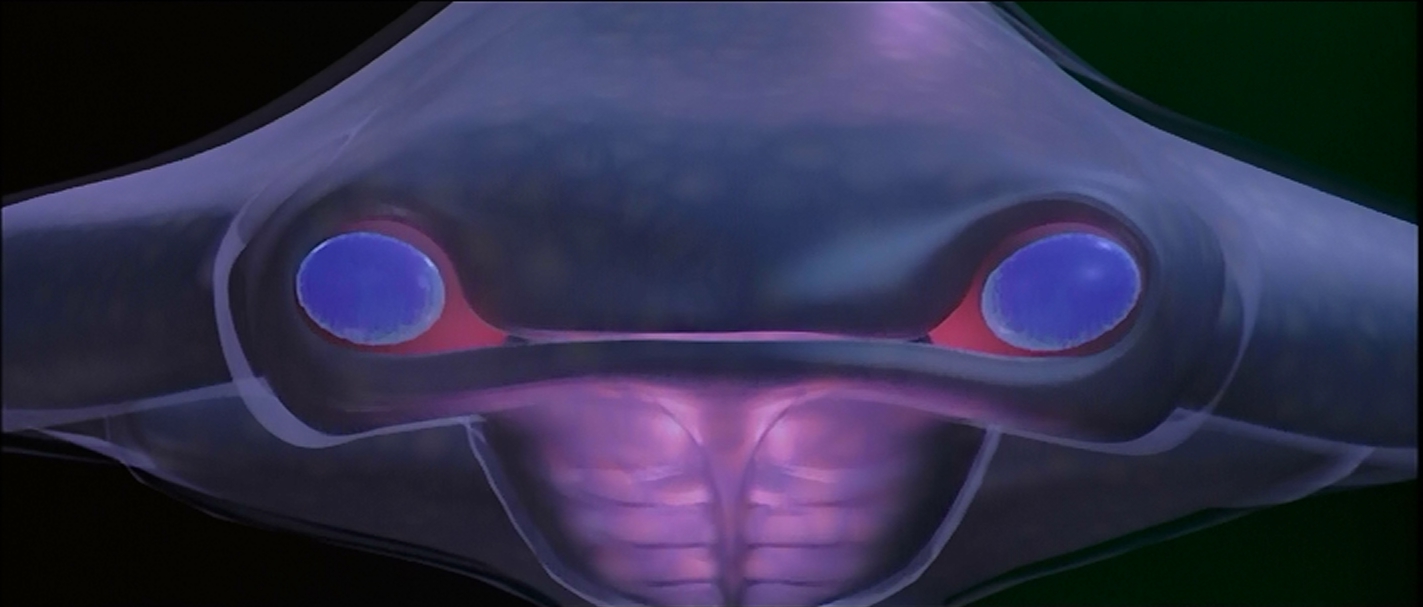
Regenerator G1, extracted from Godzilla, mutates it into the twisted form that Godzilla fights.
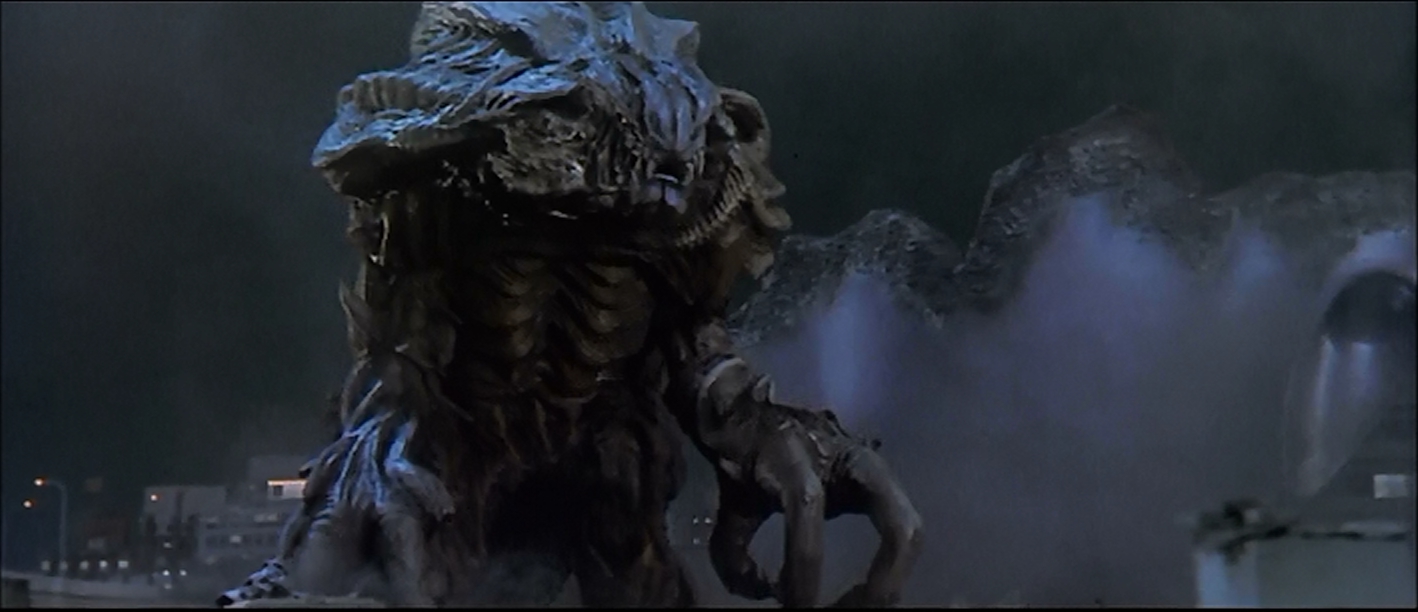
The miniatures work is fantastic. Godzilla is weighty, when it swings its tail, houses are crushed. Combined with the sound, deep crashesm, the shattering of glass, the effect is bone-jarring. The destruction in this film feels more real than virtually any other Godzilla film. Godzilla is often shot from a low angle, which imparts a sense of power and size that is sometimes lacking in these films.
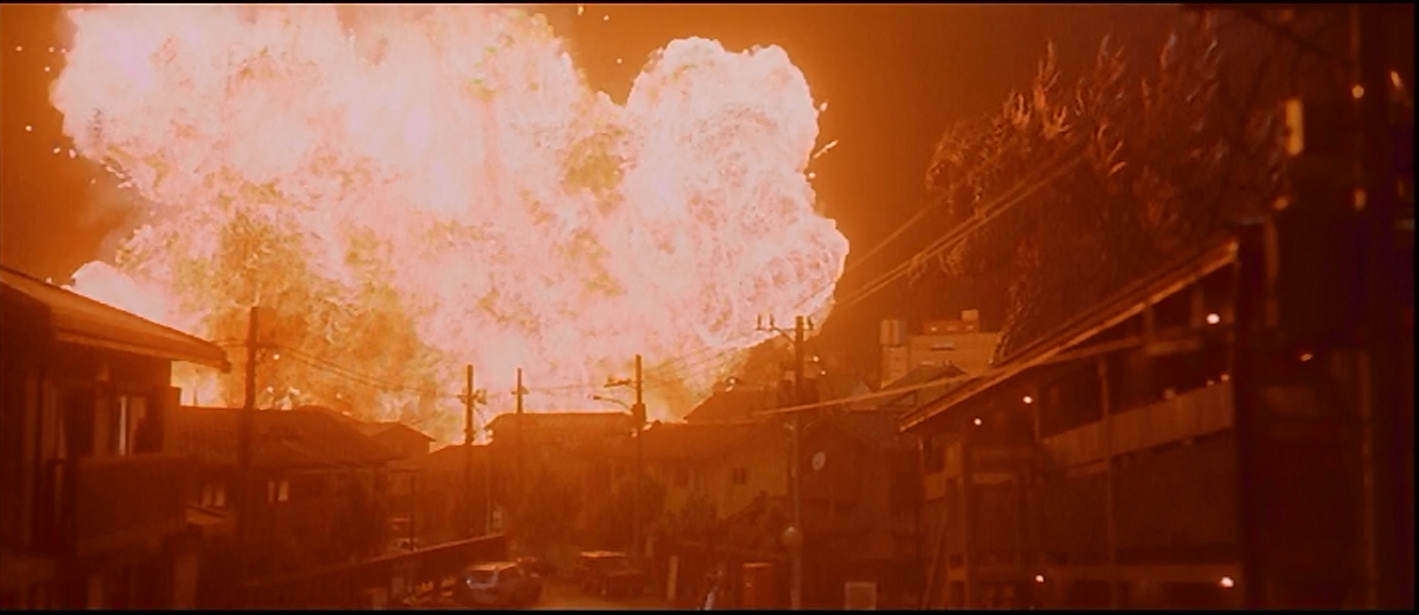
And the destructive power of Godzilla's atomic ray is awesome in this film. Anguirus would not be able to just shrug off the explosive energy projected by Godzilla here. One shot from the heat beam destroys the back half of the spacecraft, although it's not enough to kill it. The second shot blows through the remains of the spaceship and goes on to sear Ogra's back. Lucky, it's got Regenerator 1 to fix itself.
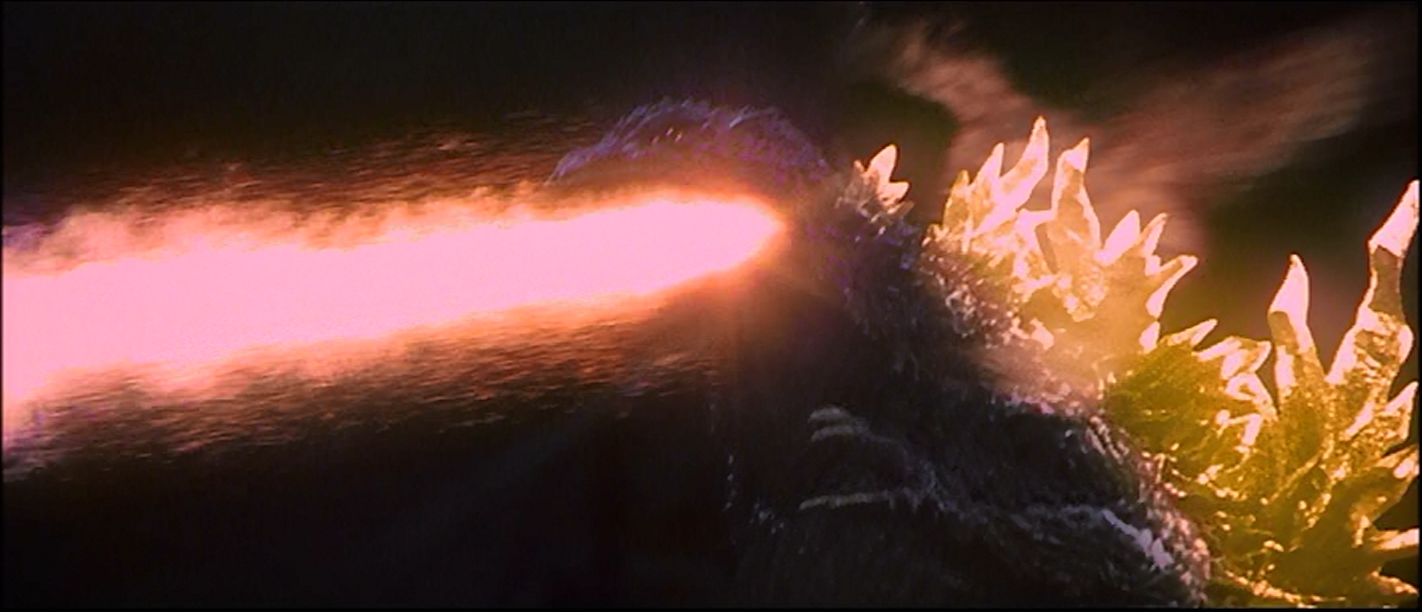
And there is a moment, after Ogra has been blasted and severely injured by Godzilla's atomic heat ray, that the music, which has been uninspiring up to now, plays a mournful tune. Ogra may be the enemy, but it clearly got in over its head, and now it's in pain. This note of sympathy gives the combat an emotional keynote unexpected in a sequence about giant monsters.
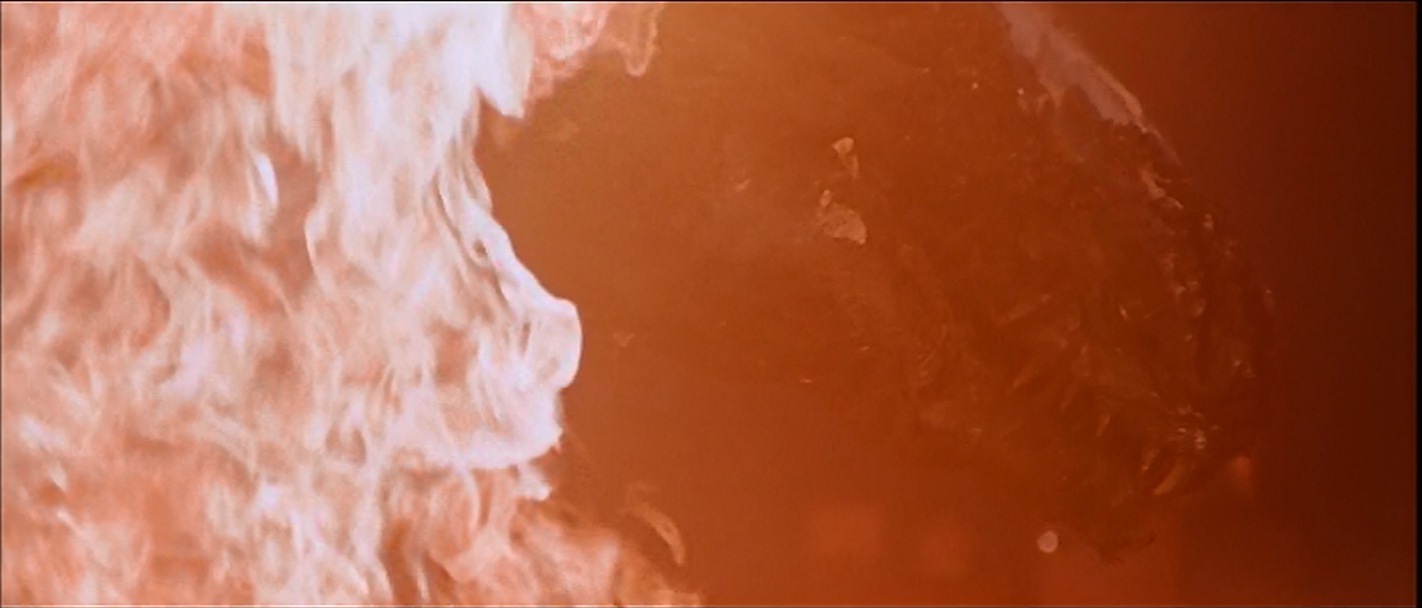
Of course, Ogra then attempts to devour Godzilla. Having been asleep for the events of Godzilla vs Biollante, it apparently is unaware of how bad an idea this is. It grows spines like Godzilla, but we know the jig is up when Godzilla's own spines begin to glow.
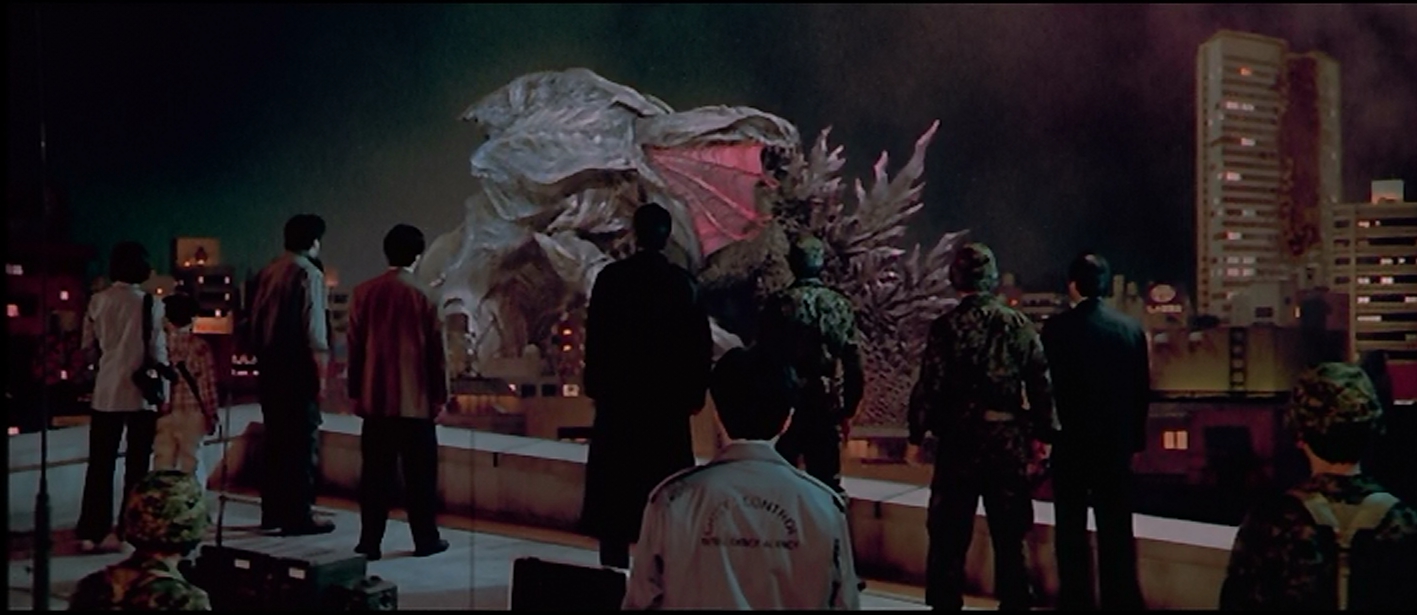
Unfortunately, the script then gives us a horribly stupid pontification about how Godzilla knows there's some Godzilla in all of us. It's not a creation of the dub, it's right there in the original script. And it's the sort of thing that leaves a bad taste in this viewer's mouth. I always forget abotu the line, and then I watch the film again. And it's horribly times, right at the end of the film, so it leaves a lasting impression.
One of the central themes of the film is respect for Godzilla. At the beginning of the film, Shinoda has a very close encoutner with Godzilla in his Godzilla chasing truck. He shuts down the lights and tried to be very quiet, so as not to provoke the massive beast before him. His government-funded counterpart, Katagiri, has his encounter at the end of the film. Katagiri does not understand Godzilla, and so when he does the same thing, facing down Godzilla, he does not survive the experience. American producers be warned! Respect Godzilla or be destroyed.
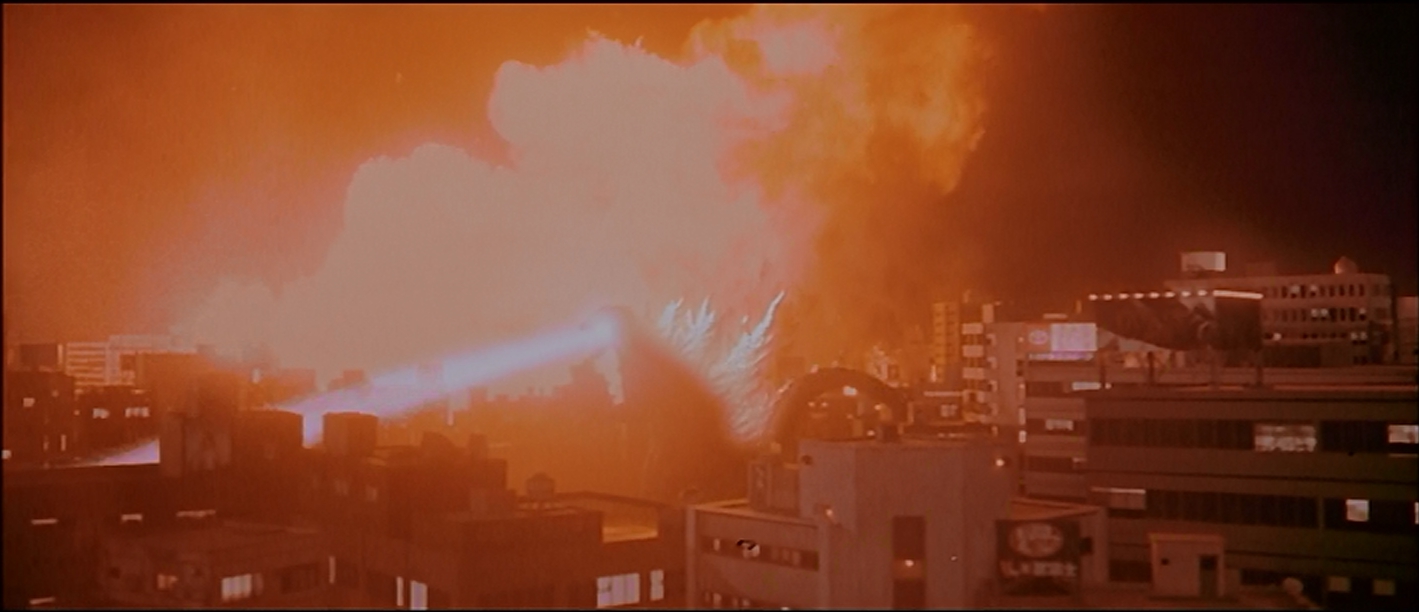
Next up, the Terrible Terrapin completes his trilogy.
